Si miras el nuevo Suunto 9 de lejos y de perfil parecerá que nada ha cambiado con respecto al Suunto Spartan Ultra más allá de un nuevo diseño de bisel. Y si trasteas el menú vas a continuar con la misma sensación. Otra cosa que ha cambiado es la forma de fijar el nombre del reloj, algo necesario después del tortuoso inicio que tuvieron los Spartan en su llegada al mercado y que estaba entrando en la problemática de nombres excesivamente largos (por ejemplo: Suunto Spartan Sport Wrist Hear Rate Baro. Prueba a decirlo del tirón sin parar a coger aire).
Pero el Suunto 9 es más que un simple lavado de cara, es una evolución de un reloj con un cliente objetivo muy marcado: el corredor de montaña. Y hacia él se han enfocado las novedades del Suunto 9, poniendo el foco en la duración de batería con nuevos perfiles de ahorro de energía y un nuevo modo GPS sin uso de GPS que parece pura magia.
Las novedades no están exclusivamente en el software. Ahora el Suunto 9 tiene sensor de pulso óptico (algo de lo que carecía el Spartan Ultra) y ha cambiado de proveedor para su chip GPS, que ahora es de Sony.
En el camino también está un cambio en la plataforma web y en la aplicación móvil, pero todavía se encuentra en modo beta y nos quedan algunos meses por delante para que esté a la altura de lo que Suunto quiere (y lo que los usuarios esperamos).
He intentado mantener la prueba concisa y centrarme en los detalles novedosos del Suunto 9, y aún así me ha salido un artículo igual de largo que todos los demás. En fin, supongo que no tengo remedio.
Recuerda que si te gusta la prueba y quieres compensar mi trabajo, puedes hacerlo comprando a través de los enlaces que facilito. Además de beneficiarte de un magnífico precio una pequeña parte de dicha compra irá destinada a pagar tanto mi trabajo como los gastos que todo esto conlleva.
¿Quieres conocer todos los detalles de la nueva propuesta de Suunto? Pues vamos allá, porque llevamos juntos más de 600km de entrenamiento y nos conocemos a la perfección.
Navegar a secciones específicas
Resumen
Funcionamiento global - 9.5
Posibilidades de entrenamiento - 8.5
Plataforma y aplicaciones - 6
Autonomía - 9.5
Acabados y comodidad - 9.5
Relación precio/prestaciones - 7.5
8.4
TOTAL
Tal vez las novedades del Suunto 9 no sean demasiado notables ni numerosas. Es cierto que la única mejora frente a los Suunto Spartan está en los modos de gestión de batería y en permitir el uso del reloj durante más horas. Pero si he de quedarme con algo es con la nueva función FusedTrack que Suunto estrena en este modelo. Es simplemente mágico.
Lo mejor
- La nueva función FusedTrack es pura magia
- Posibilidad de cambiar el modo de batería en cualquier momento
- Capaz de llegar hasta 120 horas de autonomía
- Buen rendimiento de GPS
- El sensor óptico se ha mostrado sólido en carrera
Necesita mejorar
- Excesivo consumo de batería cuando no estamos entrenando
- Suunto sigue sin poner orden en sus aplicaciones y mantiene un cacao importante que, espero, quede resuelto antes de finalizar el año
Suunto 9, detalles
Antes de entrar en materia con las novedades del Suunto 9 quiero hacer un repaso rápido a las funciones y aspectos básicos del Suunto 9. No quiero alargarme porque en esencia es igual a los Suunto Spartan de los que ya he realizado diversas pruebas. Puedes ver los detalles de cada uno de ellos en sus pruebas correspondientes, y si no conoces la gama puedes echar un vistazo a ellas para conocer en más detalle qué es lo que ofrece el nuevo Suunto 9. Aquí puedes encontrarlas: Suunto Spartan Ultra y Sport, Suunto Spartan Baro y Suunto Spartan Trainer.
Creo que es lo mejor tanto para vosotros (porque la mayoría ya conocéis las capacidades de los Spartan) y para mi, porque evito tener que repetirme como un papagayo y volver a explicar lo que ya he explicado con anterioridad.
El Suunto 9 presenta diferencias estéticas con la gama Spartan de hace dos años, pero el patrón de diseño permanece inalterado. Suunto ha cambiado el bisel con cuatro zonas rebajadas, al contrario de lo que pudiera parecer (en imágenes podría pensarse que esos cuatro puntos protegen el bisel, pero están situados a un nivel inferior).
La correa está a caballo entre las que hemos visto en modelos Suunto anteriores. En esta ocasión el reloj no queda totalmente plano al dejarlo sobre una superficie lisa como en el Spartan Baro.
Pero al igual que en el Baro, la correa permite sustitución rápida, y podrías
Tiene zonas «dentadas». Su misión no es simplemente estética, sino que permite un microajuste de la misma sin cambiar el agujero donde abrochamos la hebilla. Es decir, un mismo agujero de la correa tiene 2 o 3 posiciones por lo que puedes ajustarlo a tu diámetro de muñeca a al perfección.
Esas son las diferencias estéticas que vas a encontrar con respecto a los Spartan, todo lo demás permanece invariable. El control se hace con tres botones o a través de su pantalla táctil, la personalización se hace exclusivamente a través de Movescount (pronto también a través de la Suunto App) y tenemos diferentes widgets de información donde encontrarás información de la actividad del día a día como calorías, pasos recorridos, altitud, frecuencia cardíaca, sueño, etc.
En el reloj podrás tener los perfiles que tú configures con los datos de pantalla que elijas y también más de 80 deportes predefinidos con los campos de datos más típicos.
Como siempre digo este es un aspecto en el que los relojes de Suunto brillan con luz propia. La pantalla que montan permite mostrar multitud de información gracias a su tamaño y resolución, pudiendo configurar una pantalla con hasta 7 campos de datos. O pantallas con columnas, perfecto para ver la evolución del entrenamiento a medida que van cayendo los kilómetros o para realizar entrenamientos de series.
Los perfiles preconfigurados disponen de diferentes gráficas donde mostrar información, pero por el momento no están disponibles para los perfiles personalizados. Sigo con la esperanza que algún día lo inclyan en alguna actualización, pues no es comprensible que no esté presente en los perfiles de deporte personalizados.
En Movescount no sólo vas a configurar las pantallas de datos, también el resto de funciones de cada modo de deporte tanto de los que tú crees como los que Suunto incluye por defecto.
Cuando llega la hora de entrenar debemos seleccionar nuestro modo de deporte preferido desde el menú del reloj. Tras crear los que necesites (es lo que te llevará más tiempo, pero sólo tienes que hacerlo una vez) y sincronizar el reloj, aparecerán todos en el menú.
En la pantalla de búsqueda de satélites comienzan las novedades del Suunto 9, ya que hay un nuevo acceso directo al cambio de perfil de batería. Presionando el botón superior irás rotando entre las diferentes opciones (rendimiento, resistencia, ultra y personalizado), apareciendo en la parte superior de la pantalla de cuántas horas de batería dispones con ese modo.
Así que si vas a hacer un entreno de 8 horas y el reloj indica que en el modo de rendimiento tan sólo tendrás autonomía para 5, está claro que debes tomar decisiones. Si entras en el menú de opciones (botón inferior) y accedes a los modos de batería, podrás ver cuáles son las diferencias entre los modos o crear uno al gusto, pero de esto te hablaré con más detalle en su sección correspondiente.
Hay una función básica de entrenamiento de intervalos cuya programación se hace exclusivamente desde el reloj, también en la sección de opciones antes de iniciar el entreno. Por el momento no es posible configurarlos desde el ordenador (como en Garmin) o desde la aplicación del móvil (como sí se podía en el Ambit3), y sin ninguna duda es la demanda que lo usuarios hacen a Suunto con mayor insistencia.
Aunque la representación que se hace en el reloj es fantástica lo cierto es que son bastante limitados. Tan sólo podemos seleccionar número de repeticiones, tiempo o distancia de intervalo y duración de descanso. Pero no es posible establecer un objetivo dentro de cada intervalo, hacer intervalos de duración variable o configurar calentamiento o enfriamiento (que podrás hacer sin problemas, pero tendrás que iniciar el entrenamiento de intervalos de forma manual).
Durante el entrenamiento tendrás acceso a las diferentes pantallas y datos que hayas configurado, pudiendo acceder en cualquier momento al mismo menú de opciones del que he hablado anteriormente, por lo que puedes modificar cualquiera de los detalles durante el entrenamiento y si es necesario, cambiar también el modo de batería. Para ello simplemente debes mantener pulsado el botón central.
Al finalizar el entrenamiento tenemos acceso a la pantalla de resumen de actividad más completa de todo el sector (con permiso del Amazfit Stratos). Vueltas automáticas separadas de vueltas marcadas de forma manual (las primeras por la distancia que tú especifiques y las segundas cada vez que pulsas el botón de lap); gráficas de frecuencia cardíaca, altitud e intensidad… Simplemente fantástico.
La sincronización la podrás hacer a través de Bluetooth con el teléfono móvil o con el ordenador a través del cable de datos, y podrás verlo a continuación en la aplicación del móvil o en la propia página web. Y es aquí donde ahora mismo hay más dudas, pues Suunto lleva haciendo diversas operaciones desconcertantes. Hace algunos años compró la aplicación Sports Tracker, que se encuentra actualmente en pleno proceso de fusión con Movescount.
Lo mismo ocurre con la aplicación móvil de Movescount («limitada», por decirlo de forma discreta), que está en pleno proceso de ser sustituida por una nueva aplicación llamada Suunto a secas. Pero tanto la plataforma web como la aplicación se están retrasando más de lo que no sólo a Suunto le gustaría, sino de lo que los usuarios demandan. Es el aspecto más oscuro de este Suunto 9, que si bien la plataforma web sí está a la altura tanto en gestión como en posibilidades, la aplicación móvil y la integración con la nueva plataforma está llevando demasiado tiempo y es fuente de muchísimas quejas e incertidumbres.
Suunto ha prometido importantes novedades para después del verano… esperaremos ansiosos.
Repaso a las nuevas funciones incluidas con la última actualización
Antes de entrar de lleno en las funciones específicas del Suunto 9 y ya que esto es prácticamente una continuación de las anteriores pruebas de los Spartan, creo que es un buen momento para mencionar las novedades que llegaron en la última actualización que éstos recibieron hace un par de meses, entre las que destacaban las alertas de intensidad para tus entrenamientos. Ésa es la principal, pero no la única.
Se trata de un nuevo objetivo de entrenamiento disponible entre las opciones de cada perfil de deporte. Permite establecer una zona objetivo, recibiendo una alerta cuando nos encontramos fuera de ella tanto por arriba como por abajo. Y como al menú de opciones podemos acceder en cualquier momento, podrás activar o desactivar esa opción a mitad de actividad, o modificar la zona de trabajo.
Las variables que puedes seleccionar serán frecuencia cardíaca y ritmo para carrera, o frecuencia cardíaca y potencia para ciclismo. Si usas Stryd también es posible tener potencia como objetivo, pero para ello es necesario emparejarlo como sensor de potencia y no como footpod (pero perderías la sincronización con un medidor de potencia, que deberías volver a sincronizar la próxima vez).
A lo largo del entrenamiento el reloj te mostrará mensajes si es necesario que aumentes o reduzcas la intensidad para mantenerte en la zona seleccionada.
Es posible seleccionar las zonas de frecuencia cardíaca dependiendo del deporte, porque generalmente no solemos tener o soportar la misma frecuencia máxima en ciclismo que en carrera u otros deportes.
Son las que aparecerán después en la selección de objetivo de intensidad que has visto anteriormente.
Y hablando de objetivo, ahora además del objetivo de tiempo (y los de intensidad recién añadidos), también hay uno de distancia.
Recibirás una notificación cuando alcances el 50% o 100% del objetivo.
Seguimos con funciones de objetivos. Antes el reloj te mostraba el cómputo de ejercicio realizado en el último mes con un desglose de tiempos y distancias por deporte. A mi juicio nunca fue una función demasiado útil porque es un plazo demasiado elevado para tomar una idea de lo que estamos haciendo o si estamos siguiendo nuestro plan.
Suunto lo ha cambiado, permitiendo seleccionar ahora un objetivo de horas semanal, siendo una medida mucho más útil y más fácil de seguir. En mi caso por ejemplo lo tengo seleccionado en 6 horas y me permite ir viendo a medida que pasan los días si estoy metiendo más o menos horas. Esto se muestra en el propio widget.
En el caso del Suunto 9 dispone de una nueva esfera de reloj, cuyo anillo exterior representa precisamente este objetivo (el de las lineas independientes, el otro círculo ofrece información de la cantidad de batería restante.
También es posible mostrar la temperatura ambiente (en los modelos que incluyan termómetro, que en resumidas cuentas son los que disponen de barómetro).
Si usas el reloj en el día a día y lo tienes sincronizado con tu teléfono móvil se mostrarán en la pantalla del Suunto las notificaciones que vayan llegando. Hasta ahora era bastante incómodo, porque la notificación se mostraba… pero tras unos segundos desaparecía y no había forma de consultar qué es lo que habíamos recibido y nos obligaba a sacar el teléfono y mirarlo.
Ahora hay un centro de notificaciones donde podrás revisar todas las notificaciones que haya pendientes en el teléfono.
Sólo aparecen las que estén «vigentes en el teléfono». Cuando eliminas una del teléfono, desaparecerá entonces del reloj. Pero lo que no es posible es eliminar la notificación en el reloj y que desaparezca del teléfono. No obstante es una función muchísimo más práctica que como estaba implementada anteriormente.
Es cierto que las actualizaciones de Suunto no son tremendamente frecuentes, pero cuando llegan siempre aportan alguna novedad más o menos importante.
Modos de batería
El perfil de usuario al que Suunto enfoca este reloj es perfectamente claro: corredor de ultra distancia. Si ese es tu perfil estoy seguro que cuando llevas 80 kilómetros corriendo hay muchas cosas que te preocupan, pero no quieres que la batería del reloj sea una de ellas.
Suunto piensa lo mismo, y lo lleva pensando desde hace tiempo. Si eres cliente Suunto desde hace tiempo estoy seguro que por tus manos ya han pasado diversos modelos, como el Ambit3 Peak que ofrecía hasta 50 horas de autonomía con GPS cada 60 segundos.
En los Spartan Suunto continuó haciendo cambios para poder alargar la duración de la batería: apagar la pantalla de forma automática, reducir la cantidad de colores que se muestra en la pantalla, etc.
Pero con tanta opción y tanta variedad todo se estaba complicando demasiado. Y si hay algo que en Suunto cuidan sobremanera es en tener una interfaz de usuario limpia y fácil de utilizar. Algunas opciones se podían modificar en el reloj, otras sólo en el perfil de deporte desde Movescount, y estando ligado de forma exclusiva a ese perfil por lo que tampoco permitía hacer cambios a mitad de recorrido (si de repente te das cuenta que te puedes quedar sin batería).
Con el Suunto 9 todo eso queda reducido al uso de diferentes perfiles de batería. Hay tres modos de batería predefinidos y uno personalizable en el que podemos ajustar los valores a nuestro gusto.
Por defecto el modo que estará siempre activo será el de Rendimiento, siempre que no hayas creado uno personalizado, en cuyo caso ese será el que se use de forma predeterminada.
¿Cómo funciona? A la hora de comenzar un entrenamiento o carrera, ahora se muestra una nueva opción en la pantalla de búsqueda de satélites y sensores.
En la parte superior puedes ver la autonomía restante en horas junto con el color representativo de cada uno de los modos (verde, amarillo y rojo en nivel de más a menos precisión; azul para el personalizado que es específico de cada perfil deportivo). Puedes cambiar de modo rápidamente simplemente pulsando el botón superior, o entrar dentro del menú de opciones (pulsando hacia abajo) para ver los detalles de cada modo.
Las horas de batería que se muestran son «en tiempo real». Es decir, con la batería que le queda al reloj nos indica cuál será la duración máxima que se puede alcanzar.
El modo de batería no sólo se configura al comenzar el entrenamiento, también puedes hacerlo a mitad de éste. Tan sólo tienes que mantener presionado el botón central para acceder al menú de opciones y ahí podrás cambiar el modo si lo estimas necesario.
La autonomía declarada por Suunto para cada modo es la siguiente:
- Modo Rendimiento: Hasta 25 horas
- Modo Resistencia: Hasta 50 horas
- Modo Ultra: Hasta 120 horas
Estos tiempos son aproximados porque depende también de la temperatura ambiente (con frío la autonomía es menor), etc. Y recordar también que es con uso de sensor de frecuencia cardíaca en la muñeca, si pasamos a usar un sensor Bluetooth la autonomía es ligeramente mayor.
Pero como indicaba anteriormente no tienes que preocuparte de memorizar estos datos porque te los indicará el propio reloj cuando vayas a seleccionarlos, al igual que si la configuración de los modos predefinidos no se ajusta a lo que deseas puedes establecer los ajustes como quieras con el modo personalizado.
Hay cambios que suponen mayor o menor ahorro de batería. Como es lógico el GPS es lo que mayor consumo de batería tiene. En el modo rendimiento el registro es cada segundo, pasando a 60s o 120s en los modos de Resistencia o Ultra. En estos casos el reloj utilizará la función de FusedTrack que verás en la siguiente sección.
Opciones con un impacto medio en la batería son la medición de pulso en la muñeca, el modo de pantalla a todo color o la pantalla siempre encendida.
Pero las cosas no quedan ahí. El Suunto 9 dispone de alertas preventivas inteligentes. Basándose en tu historial de actividad en días anteriores te avisará que no le queda mucha batería restante, por lo que si tienes pensado entrenar sería recomendable cargar el reloj.
Es un aviso inteligente, no es que siempre te avise cuando llega a un porcentaje determinado. Si siempre haces una tirada larga el domingo, el reloj lo sabrá y si el sábado no tienes más de un 25% de batería te recordará que con la carga que tienes igual no es suficiente para completar tu entrenamiento.
¿Qué ocurre si hacemos caso omiso a la recomendación o no tenemos acceso a un cargador? El reloj te avisará cuando alcance un 10% de batería restante y te preguntará si quieres cambiar al siguiente modo de batería -por ejemplo, pasar del modo Rendimiento al modo Resistencia-. También muestra en pantalla cuál es la autonomía restante estimada en el modo actual y la que tiene el modo que nos recomienda. Así puedes determinar si con la batería restante será suficiente para terminar tu actividad actual o no.
(Uso la foto genérica de Suunto porque no he coincidido con la cámara en la mano en el momento de aparecerme el mensaje…)
En términos absolutos los cambios no son importantes, porque ya es algo que estaba contemplado en mayor o menor medida con anterioridad. Pero a nivel de interfaz de usuario es un cambio muy importante, especialmente por las posibilidades que ofrece de cambiar de modo de forma rápida durante la propia actividad.
FusedTrack en el Suunto 9
Sin lugar a dudas considero que la novedad más importante del Suunto 9 es la inclusión de FusedTrack. No por ser nuevo (antes ya se habían hecho cosas parecidas), sino por lo bien que funciona. Es simplemente magia.
Gracias a FusedTrack el Suunto 9 consigue que a pesar de aplicar los modos de batería más restrictivos que has visto anteriormente tanto los datos de ritmo y distancia como el track que verás al sincronizar la actividad no se vea tan afectado.
Hasta ahora cuando usábamos un modo de batería restrictivo los datos de GPS eran bastante imprecisos. Esto repercutía no sólo en lo que veías después tras sincronizar, sino también en el ritmo y especialmente la distancia mientras estás entrenando.
Se activa de forma automática cuando seleccionas los modos de batería Resistencia o Ultra (o en el modo personalizado si reduces la exactitud del GPS). En estos modos el GPS sólo registra datos cada 60 o 120 segundos, y a pesar de eso el reloj es capaz de grabar tracks precisos y mostrar datos de distancia y ritmo bastante fiables. Evidentemente no es perfecto pero… es pura magia.
Entonces, si sólo tenemos datos de GPS cada minuto en el mejor de los casos (recuerdo, sólo si activamos algún modo de batería más restrictivo, por supuesto que en el modo normal el registro es por segundo), ¿cómo es capaz el reloj de obtener los datos?
Con FusedTrack lo que Suunto hace es tomar ese punto GPS que registra de forma esporádica para después apoyarse en los sensores internos del reloj: brújula, acelerómetro y giroscopio. De esa forma el reloj sabe si desde que ha registrado el último punto seguimos en línea recta o hemos girado (brújula) o hemos acelerado o reducido ritmo (acelerómetro).
En definitiva no es más que un algoritmo matemático, pero que funciona fantásticamente bien. Y a la hora de tener un resultado final es como si llevásemos un reloj con modo de grabación inteligente (registrando GPS cada varios segundos), porque en el archivo de actividad va grabando datos de posicionamiento cada varios segundos, aunque sólo uno de esos puntos sea real cada 60 o 120 segundos.
Descargando el archivo GPX se puede ver claramente que es el reloj el que completa los datos con puntos continuamente. Por ejemplo en este entrenamiento el reloj estaba en modo Ultra (GPS cada 120 segundos), sin embargo en el archivo GPX tenemos datos de posición cada 2 segundos.
Pero claro, para que el algoritmo pueda hacer su trabajo de forma correcta es necesario que tenga datos consistentes. Lo primero que necesitamos es calibrar el acelerómetro con nuestros datos. Basta salir a correr haciendo uso del GPS para que sea capaz de identificar las particularidades de nuestro ritmo y zancada.
A partir de ese momento si vamos a realizar una actividad con uno de estos modos, o cambiamos a ellos a mitad de actividad, será necesario hacer la calibración de la brújula.
Esta parte es crucial, y Suunto recomienda hacer la calibración en un lugar abierto sin nada que pueda alterar la medición de la brújula. Por tanto no hacer calibración en interior de edificios, cerca de grandes masas metálicas, junto a un transformador eléctrico, etc. Si la brújula no se calibra correctamente los resultados no serán positivos.
Eso es todo lo que tenemos que hacer por nuestra parte, a partir de ahí el reloj es capaz de sacarse puntos de la chistera.
¿Y cómo se ve? Pues aquí te pongo un ejemplo en el que el Suunto 9 está en modo Ultra mientras que Garmin FR935 y Polar M430 graban datos cada segundo.
Repito, me parece pura magia. La parte que ves a la izquierda es una recta donde estaba realizando intervalos constantes. Sí, aquí el track se escapa ligeramente en un par de ocasiones, pero a pesar de la dificultad (y que el algoritmo no está diseñado para esto) la representación es casi perfecta con escasos metros entre los diferentes tracks.
Pero fíjate en el resto de puntos. La representación del paso por el paseo marítimo es perfecta. Cuando el paseo dibuja una curva el Suunto 9 la interpreta perfectamente, coincidiendo casi a la perfección con los otros dos relojes. ¿Y el punto de giro? Sencillamente alucinante pues lo hace exactamente en el mismo punto que los otros dos.
Y recuerdo que la grabación es en modo Ultra, por tanto sólo está registrando localización GPS una vez cada 2 minutos. El resto de puntos el Suunto los ha extraído el solito.
¿Casualidad? Te pongo otro ejemplo, también en modo Ultra.
Aquí lo tienes en un entrenamiento completo de aproximadamente 10 kilómetros. Sí, es cierto que en algunos puntos el Suunto 9 tiene una ligera desviación de la ruta y que no es totalmente perfecto. Pero siento ser tan insistente, me parece increíble la precisión de GPS… ¡sin usar GPS! En ese entrenamiento hay sólo 49 puntos registrados por GPS, todos los demás han sido interpretados por el reloj.
El Suunto 9 no ha sido el primero en tener un modo de duración extendida de batería, por supuesto. Pero la comparación con anteriores modelos de Suunto o de otra marca les hace palidecer tremendamente, y eso que Garmin hace algunas cosas parecidas en el modo UltraTrac. Y para probar esto nada mejor que ir al terreno para el que esta función se ha diseñado: la montaña.
En este caso son 4 relojes los que llevaba, y tres de ellos en modos de GPS de ahorro de batería con un cuarto a modo de control. Estos son los modelos, el modo de GPS y los colores que se ven en el plano:
- Suunto 9: Modo de batería Rendimiento con GPS cada 60 segundos. En el plano aparece en color morado.
- Suunto Spartan Sport Wrist HR: Modo de GPS OK con registro cada 60 segundos. En el plano su track es el de color verde.
- Garmin FR935: Modo UltraTrac con registro GPS variable (el reloj decide cuándo activa el GPS y cuándo lo desactiva), y en el caso del 935 este modo hace uso del giroscopio para mejorar la calidad del track, algo similar a lo que Suunto quiere en el 9. Su gráfica está en color azul.
- Garmin FR230: Es el reloj de control y tiene configuración para la máxima calidad posible: GPS+GLONASS cada segundo. Es el que se muestra en color rojo.
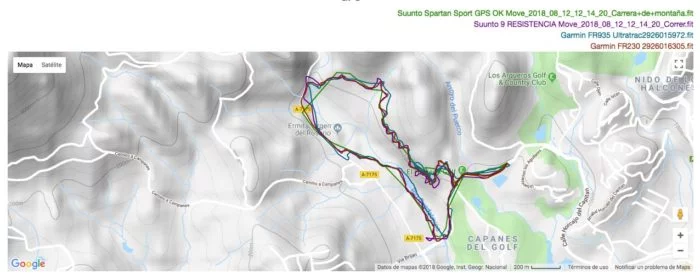
Empiezo por esta zona de curvas marcada. Recuerda que si haces click en la imagen la verás a mayor tamaño.
El Garmin FR230 es el que nos marca el trazado correcto, en todo momento marca los giros perfectamente. El primero en excluirse de la comparativa es el Suunto Spartan Sport que decide viajar en avión sobrevolando las montañas en una línea totalmente recta. Ya ves que con esa configuración de GPS se muestra totalmente inútil. El siguiente es el Garmin 935 que a pesar de comenzar bien con la primera recta (el sentido de marcha es de «abajo hacia arriba»), simplemente intuye que es una zona de curvas. Hace ondulaciones en el camino pero va constantemente fuera de pista.
Mientras tanto el Suunto 9 circula casi siempre paralelo al Garmin 230 y sólo se aleja de la zona en algún momento puntual, pero el resultado es un track bastante decente.
Continúa el entrenamiento hacia una zona algo más recta tras el giro de 180º. El Suunto Spartan Sport, con el GPS cada 60 segundos, sigue totalmente a su bola. El Suunto 9 no hace el giro de 180º correctamente, aunque se vuelve a unir no mucho después al FR230 en el camino correcto, mientras que el 935 continúa intuyendo el camino…
Amplío el punto de cruce del puente porque en esa zona hay menos cobertura de los árboles en la zona del camino y se puede ver perfectamente cuál es el trazado correcto. Trazado que ninguno de los cuatro relojes ha conseguido representar correctamente, ni siquiera el FR230.
Como curiosidad el Suunto Spartan Sport ni siquiera aparece, ha recortado completamente y ya está terminando el entrenamiento. En este tramo tanto el Suunto 9 como el 935 comienzan bien, pero a mitad de bajada se separan totalmente, mientras que el FR230 está totalmente fuera del recorrido. Puede que estos problemas sean debidos a que es una bajada algo técnica con tierra suelta y bastantes piedras, por lo que se baja con los brazos abiertos para ayudar a mantener el equilibrio. Eso conlleva un cambio brusco en la forma de llevar el reloj que puede alterar el algoritmo de los relojes. Y desde luego es una pesadilla para los que se basan en el uso de giroscopio.
Punto de giro y vuelta a subir. Los diferentes relojes llegan al puente de la misma forma que han estado durante el resto del entrenamiento, con un buen rendimiento general del Suunto 9 hasta que se lía totalmente a la hora de encararlo. El 935 tampoco va mal, pero continúa recortando cuando puede y en la subida al puente también se lía de forma parecida a lo sufrido por el Suunto 9. Mientras tanto el Suunto Spartan Sport tiene el clásico funcionamiento de un reloj que registra cada 60 segundos: cuando obtiene señal GPS el punto es válido, pero el fallo llega en la unión de todos ellos. Si fuese una recta no habría problemas, pero en los giros es obvio que tenderá a hacer recortes.
Como he dicho anteriormente el Suunto 9 tiene unos tracks que están lejos de ser perfectos, pero ya has visto que la diferencia con el Suunto de la anterior generación es absolutamente abismal, siendo la tasa de registro de GPS la misma (cada 60 segundos).
Comparado con el modo UltraTrac de Garmin las diferencias son menores, pero el track del Suunto 9 tiene mejor definición y tiende a ser más preciso en casi todo momento.
Estas son las distancias finales medidas por los diferentes relojes:
- Suunto 9: 6,13km
- Garmin FR935: 6,13km
- Garmin FR230 (con Stryd): 6,05km
- Suunto Spartan Sport WHR: 4,64km
Llegados a este punto te estarás preguntando qué ocurre cuando tenemos cargado una ruta de navegación. Necesitamos datos precisos en todo momento, porque si nos salimos de la ruta no sería lo más correcto tener que esperar dos minutos para saber que tienes que volver por donde has venido…
En este caso aunque tengamos seleccionado algún modo de batería restrictivo, el GPS pasará a funcionar a pleno rendimiento (registrando datos cada segundo), pero sólo cuando estemos en la pantalla de navegación de ruta. Si lo que estamos mostrando es alguna pantalla con datos se respetará la selección de modo que hayamos hecho.
Evidentemente esto tiene algunas concesiones y cambios. Es evidente que el ritmo mostrado en el reloj no va a ser preciso en todo momento, pero dado que el uso de este modo está pensado para largas carreras en montaña donde realmente, el ritmo es lo de menos… no es algo que me preocupe. Y si te preocupa siempre puedes emparejar un footpod para mayor precisión.
Otra pequeña concesión es que las vueltas automáticas ya no serán cada kilómetro sino cada cinco minutos. El motivo es el mismo, no hay posibilidad de aportar el dato totalmente certero por lo que Suunto opta por ofrecer la información aproximada en ese plazo. Y mientras vas corriendo se nota que va realizando correcciones porque comparando las distancias con otros relojes en registrando en modo 1 segundo va adelantando o atrasando ligeramente, pero siempre alrededor de la misma cifra.
Lo mejor de todo esto es que es la primera versión de software del reloj y Suunto continuará trabajando en ello y mejorando la función. Si ya es bueno ahora, cuando esté todavía más refinado tal vez esas concesiones se puedan pulir aún más.
De momento la función FusedTrack está sólo disponible para los perfiles de carrera y trail running. Simplemente porque son los deportes que mayor aporte de datos ofrece y que tiene una consistencia de ritmo mayor. Andar o hacer senderismo es mucho más variable y de momento no está soportado.
Donde sí puede suponer un cambio total y absoluto es en la natación en aguas abiertas, precisamente por la dificultad que presenta para obtener datos de GPS. FusedTrack cobraría todo el sentido dentro del agua porque generalmente vamos a nadar en línea bastante recta (dependiendo de nuestra capacidad de navegación), hay datos constantes de acelerómetro y la brújula no tiene impedimento en funcionar bajo el agua. Suunto podría ser el primer fabricante en ofrecer tracks de natación super fiables. Lo espero con ansia.
Nuevo chip GPS en el Suunto 9
Algunas de estas funciones que has viso hasta ahora son sólo posibles porque en el 9 Suunto ha cambiado de proveedor GPS, montando ahora un chipset de Sony (probablemente el CXD5603GF). Suunto no ha especificado cuáles han sido los motivos de este cambio pero lo más lógico es pensar que es debido a un mejor perfil de uso energético.
Así que dado el cambio en ese aspecto es de vital importancia echar un vistazo a los tracks de GPS más allá de los que hemos estado viendo en la sección de FusedTrack. Así que a continuación me centraré en tracks grabados en el modo de batería Rendimiento (GPS 1 segundo).
No he recogido muchas comparativas para mostrar gráficas (ya que me he estado centrando en FusedTrack y la mayor parte del tiempo que he comparado con otros dispositivos ha sido con modos de batería restrictivos), pero sí he corrido bastante con el Suunto 9 por lo que tengo perfectamente claro cuál es su funcionamiento. Es decir, no tengo una gran base de datos para mostrarte pero sí un montón de entrenamientos realizados con el Suunto 9.
Lo primero a destacar es que el Suunto 9 sólo es compatible con satélites GPS, al menos de momento. Por tanto no hay soporte para GLONASS o Galileo, aunque dado que Suunto se ha centrado en la función de FusedTrack y le funciona tan estupendamente es algo que no echo de menos.
No quiere decir que Suunto no active más adelante la posibilidad de usarlos. Ya se hizo en el pasado con otros modelos como los propios Spartan, pero lo cierto es que incluso Suunto desaconseja su uso salvo en entornos urbanos complicados (aquí tienes más información sobre qué beneficios tendrías con GLONASS). Considerando el trabajo que están haciendo con el modo FusedTrack y la búsqueda de una autonomía lo más alargada posible no le veo la necesidad, siempre que el FusedTrack se aplique no sólo cuando hay algún perfil de batería restrictivo sino en todo momento.
>> Actualización: El Suunto 9 ya es compatible con satélites GLONASS tras la actualización 2.5.18
Paso a analizar algún ejemplo de actividades realizadas en modo de GPS normal, que a pesar de haber hecho una visita a lo que ofrece el modo FusedTrack el uso del reloj será en un perfil de batería normal durante todos los entrenamientos. Es simplemente alguno de los ejemplos de los muchos entrenamientos que he acumulado con el Suunto 9.
Empiezo por este entrenamiento de cambios de ritmo. No es mi zona habitual de entrenamiento en la que todo es mucho más sencillo porque está totalmente abierto al cielo. Aunque no hay edificios altos, sí hay bastantes zonas verdes y los edificios bajos también son exigentes en el sentido que pueden hacer rebotar la señal GPS y confundir a los relojes.
Pero a simple vista parece que los tres elegidos para este entrenamiento (Suunto 9, Suunto Spartan Trainer y Garmin FR935) coinciden plenamente. Pero como siempre, cuando se aplica el zoom veremos algunas diferencias.
Atentos a este detalle en el giro de la esquina. Los tres relojes hacen perfectamente el giro de la rotonda, pero en el momento de llegar a la esquina tanto el Spartan Trainer como el 935 recortan sobre el edificio. Pero el Suunto 9 dibuja la esquina a la perfección.
No es habitual ese comportamiento, sin embargo el 9 lo dibuja a la perfección.
Esta otra rotonda también es un buen ejemplo, aunque en este caso el dibujo del Suunto 9 no es perfecto ya que en ningún momento he corrido por la calzada. Eso sí, en descarga de los tres modelos, la acera es bastante estrecha.
Pero en esta imagen lo que quiero destacar es el cruce de la carretera. Evidentemente soy un ciudadano ejemplar y siempre siempre cruzo por el paso de peatones (ejem…). Bueno, al menos en este caso sí lo hago.
Y el Suunto 9 lo cruza también conmigo. Sin embargo tanto el otro Suunto como el Garmin vuelven a recortar en este punto, al menos a la ida. Es un lugar de cruce de la ruta y verás que hay dos gráficas, siendo ambas correctas.
Pero no te creas que el Suunto 9 siempre lo hace todo bonito, también sufre momentos de locura como este pequeño pico que hace en plena recta sin ningún motivo.
Vamos con otro entrenamiento diferente, en esta ocasión un fartlek con cambios continuos de ritmo, pero sin hacer descanso parado, por lo que siempre hay continuidad en la gráfica.
En esta ocasión el Suunto Spartan Trainer es sustituido por un Garmin FR230. Ahora la gráfica que interesa es la de color morado, que es la que corresponde al Suunto 9. Y a primera vista ya puedes ver que el Garmin FR935 no ha tenido su mejor día, saliéndose del trazado numerosas ocasiones y “haciéndose notar”. Pero vamos a analizar cada caso.
Es mi ruta más habitual, donde tengo perfectamente identificados las zonas más problemáticas empezando por este punto en el que se corre por debajo de árboles frondosos y con edificios a ambos lados. Crea un efecto túnel y, sin salir a zona abierta, hago un giro de 90º. Un infierno para los GPS.
Nuevamente el Suunto 9 es el que mejor comportamiento demuestra en el primer giro de 90º. El Garmin FR230 lo acompañaba bastante bien, pero recorta ligeramente en la curva. El FR935 lo hubiese hecho bien… pero viene dando bandazos hasta llegar a ese punto.
Poco después hay un nuevo giro cerrado que el Suunto 9 vuelve a hacer a la perfección (se sube unos 20cm sobre la vaya, pero la curva la dibuja perfectamente), mientras que el FR230 corta nuevamente. El 935 parece haberse recuperado, y más adelante continúan los tres ligeramente por jardín ajeno, pero sin cosas extrañas.
Es algo que continúa más adelante, desviándose los tres modelos 2-3 metros hacia la izquierda de la ruta real.
A continuación tenemos dos zonas diferenciadas. La parte inferior, con visibilidad plena y sin ningún tipo de problema de rebote de señal, los tres relojes se muestran perfectamente fiables.
Pero en la parte superior se corre nuevamente bajo una zona de árboles y flanqueado por edificios. Y la experiencia me dice que siempre es un punto conflictivo, como ocurre en esta ocasión. Ninguno de los relojes hace esa zona a la perfección, pero tanto el FR230 como el Suunto 9 son los que menos cosas extrañas realizan. Definitivamente el 935 no tenía su día.
Aunque hay días maravillosos en los que todos los relojes coinciden plenamente…
Por último, ¿le echamos un vistazo al registro de altimetría?
Las gráficas no están alineadas porque no he hecho una calibración inicial en el Edge 520 (el Suunto 9 tiene FusedAlti, por lo que se calibra automáticamente). ¿Cómo sé que la gráfica del Edge 520 está por debajo de lo que debería ser los datos correctos? Porque tengo una bicicleta, no un submarino, por lo que es imposible que haya realizado alguna zona por debajo del nivel del mar.
Sin embargo podemos apreciar perfectamente como ambas gráficas son totalmente paralelas entre sí.
He tenido oportunidad de hacer también algo de natación en aguas abiertas. No todo lo que hubiese deseado pues llevamos un verano horroroso de plaga de medusas y no he podido salir al mar todo lo que hubiese deseado, pero sí he hecho algún entrenamiento.
La mejora comparado con anteriores modelos de Spartan es sustancial. Digamos que los Spartan no han sido nunca relojes muy fiables al nadar en aguas abiertas, con distancias muy ampliadas debido a hacer tracks de forma muy irregular.
En cambio el Suunto 9 se comporta bastante mejor en esta faceta, al menos a la hora de grabar el track de forma satisfactoria.
Tenemos este ejemplo en el que los tres relojes coinciden bastante en el camino seguido. Aquí el que marca el dato correcto es el Garmin FR230, que está siempre fuera del agua al llevarlo bajo un gorro de natación. Tanto el FR935 como el Suunto 9 van en las muñecas por lo que tienen que pelear con la pérdida constante de señal GPS debajo del agua (las señales digitales no pueden penetrar bajo el agua).
Del track rojo del FR230 hay que olvidar la parte final (donde se ve una línea totalmente recta) pues se pausó en mitad de la grabación.
El Suunto ha mejorado mucho con respecto a modelos anteriores, prueba de ello es que prácticamente dibuja la misma ruta que el FR230 (que está fuera del agua grabando por segundo). Sólo hay dos discrepancias, la zona indicada anteriormente donde el FR230 ha dejado de grabar y el punto de giro, donde hago un breve descanso para beber algo de agua.
El FR935, que hasta ahora siempre se había mostrado como la opción más fiable para nadar en aguas abiertas, tiene un track con mucha menos definición, líneas más rectas y con puntos de referencia muy espaciados entre sí. A priori la ruta seguida es buena, pero la del Suunto 9 es mejor pues hay momentos que clava perfectamente el track del FR230.
Las discrepancias llegan con las distancias medidas:
- Suunto 9: 1.810m
- Garmin Forerunner 935: 1.399m
- Garmin Forerunner 230 (interrumpido antes de terminar): 1,170m
Es aquí donde hay cosas extrañas, porque si el track es tan similar… ¿por qué hay tanta diferencia de metros? Considerando que al FR230 le faltan unos 3 minutos de grabación nos da una distancia total muy cercana a los casi 1.400 metros que ha medido el 935.
Seguramente estés pensando que si el Suunto ha sido el que mejor track ha hecho, ¿no será que la distancia real será la que indica éste? Pues no, porque el entrenamiento ha durado unos 32 minutos con unos cinco minutos totales de parada entre medias, y dudo mucho que sea capaz de alcanzar esos ritmos en un simple entrenamiento (salvo que mi natación haya mejorado mucho este invierno).
En resumen, el cambio de chip no le ha sentado mal al Suunto 9. Al contrario, su rendimiento ha sido muy sólido todos los días en los que hemos estado entrenando juntos (y van ya muchas horas). No es perfecto, porque ninguno lo va a ser. No se trata de un instrumento de precisión, pero los tracks que he visto de todos mis entrenamientos son satisfactorios en todo momento y nunca he visto cosas extrañas.
Sensor de pulso óptico
Otra de las novedades presentes en el Suunto 9 si lo comparamos con el Spartan Ultra es la inclusión del sensor de pulso óptico. Se trata de la última versión «disponible» del sensor de Valencell. Ésta es la 1.2, porque Valencell ya dispone de una 2.0 pero no estaba lista para ser incluida en el Suunto 9. De hecho no hay ningún dispositivo todavía en el mercado que incluya el nuevo paquete 2.0, cuyo principal beneficio está centrado simplemente en un mejor rendimiento de batería para el seguimiento de pulso durante las 24 horas.
Este sensor es capaz de realizar muchas funciones además de las ya incluidas en el reloj, al menos en el aspecto biométrico. Suunto podría habilitarlas en el futuro a través de una actualización de firmware, cosas como variabilidad de pulso en reposo o intervalo R-R (puedes ver toda la información del sensor en su hoja de datos, increiblemente detallada).
De momento el uso del sensor se centra exclusivamente en el registro de frecuencia cardíaca no sólo en actividad, sino también en modo reposo. Es una opción que puede ser activada o desactivada. En caso de usarlo tomará un registro cada 10 minutos y mostrará la información directamente en el reloj a través de una gráfica de las últimas 12 horas.
En ese mismo widget también puedes consultar tu frecuencia cardíaca actual, incluso aunque no tengas activada esta función.
El problema actual es que la información de esas 12 horas (y lo que ha pasado antes o después) no queda grabado en ningún sitio. No hay posibilidad de visualizarlo en la aplicación de Suunto, en Movescount o en Sportstracker; al menos de momento.
Es de suponer que con la profunda obra que está sufriendo la nueva app de Suunto y la web de Sportstracker se añada la posibilidad en un futuro próximo, pero a día de hoy es una función que sirve para poco más que para gastar batería. Así que mi recomendación es que por el momento lo desactives, especialmente porque es algo que tiene un impacto elevado en la batería del día a día.
Pero vamos con las pruebas específicas del sensor óptico en el momento que más nos interesa, que es durante los entrenamientos. Para ello y como siempre hago simplemente entreno con el reloj, acompañado de otros sensores de pulso para poder verificar los datos aportados por todos ellos. Intento llevar al menos un sensor de pulso en el pecho y otro sensor óptico diferente para poder valorar la fiabilidad global como hasta dónde es capaz de llegar la tecnología óptica.
Empezaré con algo sencillo, un entrenamiento a ritmo constante donde ningún sensor de pulso (óptico o de lo que sea) debería tener ningún problema. En este entrenamiento acompaño al Suunto 9 con un Garmin 935 haciendo uso de su sensor de pulso óptico y de un Garmin 230 conectado a un sensor Garmin HRM-Tri.
Todo parece perfectamente estable sin demasiadas incidencias, con algunos picos puntuales de algún sensor que parece que se va donde no tiene que irse. El Suunto 9 parece que es el que más lo sufre, pero son momentos muy puntuales.
Pero no creas que el Suunto 9 es el único que sufre esto, puedes ver cómo los otros sensores también lo sufren de forma puntual. Tanto el sensor óptico del 935 como el sensor de pecho Garmin HRM-Tri.
Otro entrenamiento a ritmo mucho más constante que antes con idéntico resultado. Lo que ves en el centro es una parada breve y vuelta a reanudar donde el Polar M430 se queda un poco en vilo, pero enseguida vuelve y hace la recuperación a la perfección. Mientras tanto el Suunto 9 hace la representación perfectamente a la par del sensor de pulso en el pecho.
Cambio de tercio y vamos a un entrenamiento de intervalos donde vamos a ver algo que no suele ser frecuente: dos sensores ópticos ofreciendo un mejor resultado que el sensor de pecho. ¡Ahí es nada!
Empiezo con 20 minutos de calentamiento (donde hay una breve parada en torno al minuto 3). Tanto el Polar M430 como el Suunto 9 lo representan perfectamente, mientras tanto el sensor HRM-Tri tiene una idea bastante diferente y pierde completamente la noción de la realidad. ¿El por qué? no tengo la menor idea, simplemente hay días en los que la tecnología puede fallar, incluso aquello que está más que probado.
A continuación voy a ampliar los intervalos, compuestos por 5 intervalos breves y 5 intervalos algo más largos. Aquí es donde en teoría el sensor de pecho no debería fallar, mientras que es la parte difícil para los sensores ópticos. Pues tenemos justo lo contrario, un sensor en el pecho que prácticamente no acierta en ninguno de los intervalos y un par de sensores ópticos que registran con casi el 100% de efectividad estos cinco primeros intervalos (salvo por el último donde el Suunto 9 parece ir demasiado alto de pulsaciones).
Todas las partes que he marcado corresponden a la gráfica del sensor HRM-Tri. Pero espera que aún hay más, en el primero de los cinco intervalos restantes vuelve a perderse totalmente.
Eso sí, en el resto de intervalos asistimos a un comportamiento que suele ser habitual en los sensores de pulso óptico, y es el retraso tanto en la subida como en la bajada. En esos cuatro intervalos que restan de entrenamiento el HRM-Tri de Garmin ya se recupera del mareo inicial y se puede apreciar cómo a pesar de que miden las mismas intensidades, ambos sensores ópticos llevan el mismo retraso tanto en la subida como en la bajada.
No hay mucho que el fabricante pueda hacer, es el comportamiento habitual de este tipo de sensores y suelen ser algo más torpes en los cambios bruscos en donde llevan un retraso de unos 3 o 4 segundos por detrás de un sensor de pulso en el pecho, cuya información es más inmediata.
En bicicleta el sensor óptico del Suunto 9 me ha sorprendido. Sigue sin ser excesivamente viable, pero he conseguido mejores resultados de lo esperado (aunque no tan buenos como en el caso del Polar M430).
En general he tenido un buen rendimiento con el sensor óptico del Suunto 9. De hecho mejor que el que obtuve con el Suunto 3 hace unas semanas (y equipan el mismo sensor). Comparado con éste, el 9 tiene un problema con el que lidiar que es el mayor peso, pero a cambio tiene una huella en la muñeca mucho mayor por lo que lo protege mejor de la luz externa.
Parece que en este caso esa mayor huella beneficia al nuevo modelo de Suunto, a pesar de que su elevado peso no favorece para nada el tener buenos registros.
Cabe destacar que Suunto es de los pocos fabricantes que activan el sensor de pulso óptico durante la natación, pero aunque no lo añado en las gráficas anteriores puedo decirte que la recomendación tanto mía como del fabricante es la misma: sigue usando el Suunto Smart Sensor en el pecho porque la medición óptica bajo el agua no es para nada precisa.
En cualquier caso no tendría mayor problema en entrenar de forma regular con el sensor óptico del Suunto 9, incluso en días de intervalos y series. Eso sí, sólo en carrera, todo lo que sea cualquier otro deporte (ciclismo, natación, gimnasio, etc.) seguiremos dependiendo de la banda pectoral si es que quieres tener datos precisos.
Comprar Suunto 9
Espero que este análisis completo te haya ayudado a decidir si es un dispositivo válido para ti o no. Todo el trabajo que realizo puedes consultarlo sin ningún tipo de coste, pero si quieres apoyar la web y con ello el trabajo que realizo, la mejor forma de hacerlo es comprar tu nuevo dispositivo a través de los enlaces que facilito a continuación. Y si no lo compras hoy, ¡acuérdate de pasar por aquí cuando vayas a hacerlo!
A través de estos enlaces no sólo conseguirás un precio muy competitivo y la mejor atención al cliente, sino que además yo recibiré un pequeño porcentaje sin que a ti te cueste ningún desembolso adicional. Es eso lo que permite que pueda seguir ofreciéndote pruebas como esta en la página.
Si tienes dudas, recuerda que tienes la sección de comentarios en la parte inferior, donde trataré de resolver todas tus preguntas.
Mi opinión del Suunto 9
Si hay algo que me gusta del Suunto 9 es que está totalmente enfocado a su público objetivo, que es principalmente el corredor de montaña y en especial el que participa en carreras de ultra distancia. Si ese es tu perfil y necesitas reloj, no busques más porque el Suunto 9 es la herramienta que necesitas.
Suunto acierta al focalizar sus recursos en su cliente objetivo y no intentar plantar cara a Garmin en la búsqueda de un cliente más genérico a base de añadir decenas de funciones. Es una guerra que no puede ganar porque, sencillamente, el nivel de recursos de uno y otro ni se acerca. Sin embargo Suunto cuenta con una importante base de usuarios en el segmento de la montaña, y es a quien tienen que mantener contento.
Este 9 satisfará a la mayor parte de los usuarios de montaña porque sus novedades tienen un impacto directo en el uso que vais a hacer de él, incluso aunque no hagas carreras de ultra distancia. Aunque los perfiles de batería y la función FusedTrack esté orientado hacia esto, no es necesario que hagas carreras de más de 100km para aprovecharlo.
¿Quién no se ha quedado sin batería a mitad de un entrenamiento porque no se acordó de cargar el reloj? ¿Quién no ha puesto a cargar el reloj el día antes para, al despertar, darse cuenta que no se había puesto en carga? ¿Quién no ha salido para poco más de una hora y termina volviendo tras cinco horas de aventura? Son situaciones que pueden ser bastante cotidianas, y ninguna de ellas está relacionada con la ultra distancia.
El problema que tiene Suunto es que el que no sea corredor de este tipo de evento tal vez no piense en el Suunto 9 y prefiera una opción más económica dentro de la marca.
No creo que sea un reloj exclusivo de este tipo de usuarios. De hecho yo no lo soy, pero me ha estado acompañando en las últimas semanas de preparación para un Ironman 70.3 y ha cumplido perfectamente, porque no hay que olvidar que se trata de un reloj multideporte.
Pero no quiero olvidar un detalle importante, y es la situación actual que tenemos en torno a la aplicación Suunto App y a la nueva integración de Suunto con Sports Tracker. Movescount va a pasar a ser algo del pasado, pero el desarrollo de la nueva aplicación y plataforma está tomando demasiado tiempo. Amer Sports debe comprender que es una parte muy importante de sus relojes y debe destinar mayores recursos a su desarrollo, no sólo porque los retrasos están siendo excesivos, sino porque la competencia aprieta y cuando consigan lanzar todo tal vez se den cuenta que continúan estando por detrás de la competencia.
¡Gracias por leer!


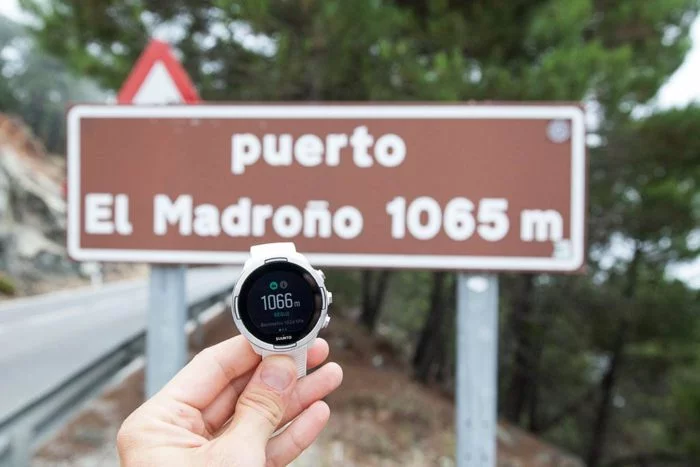
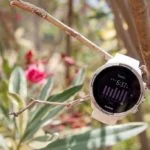
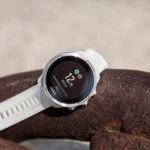
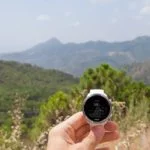
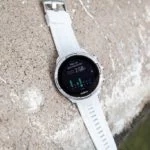
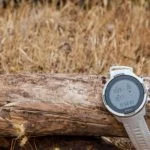
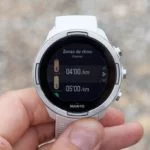
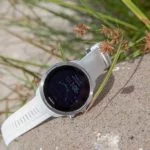
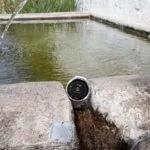








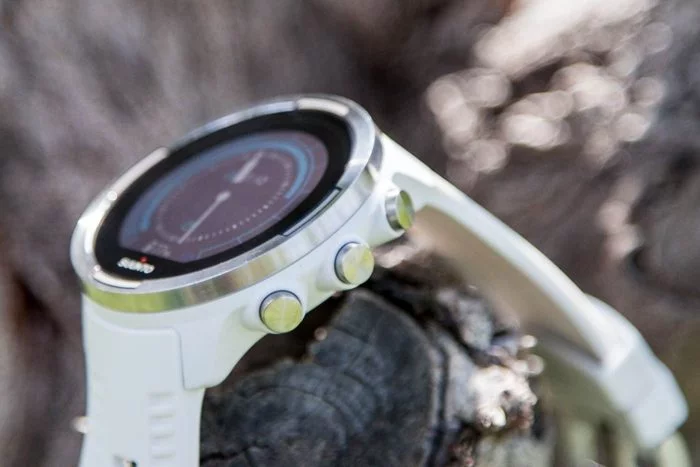
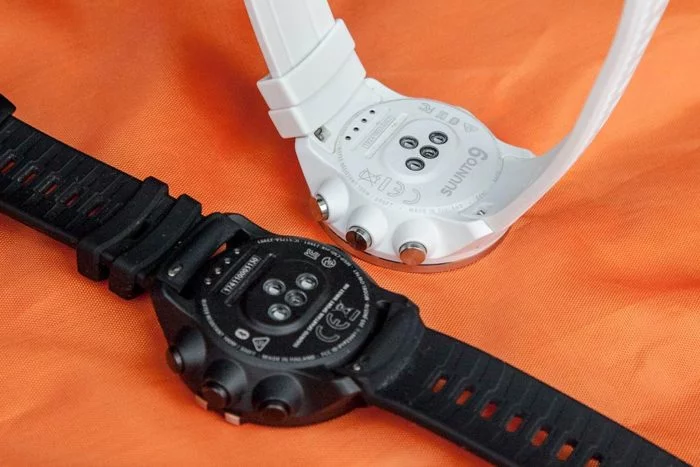
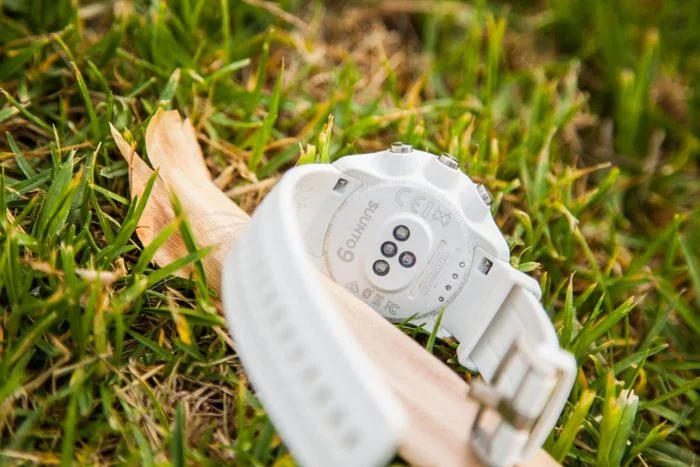
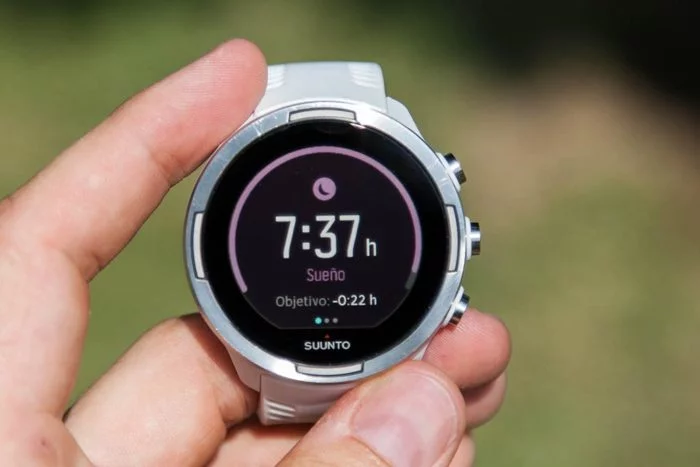
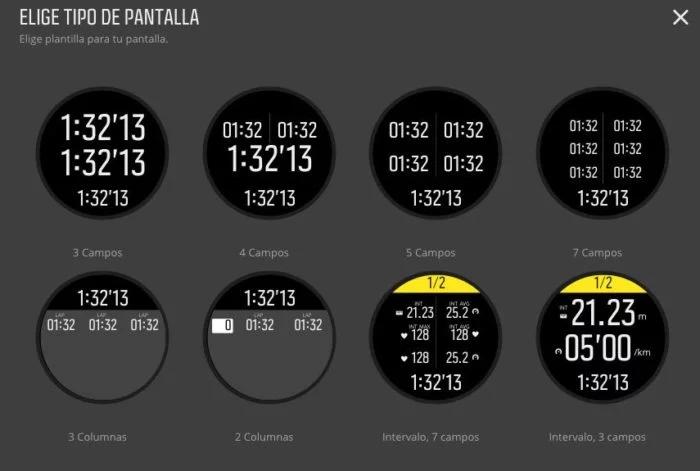
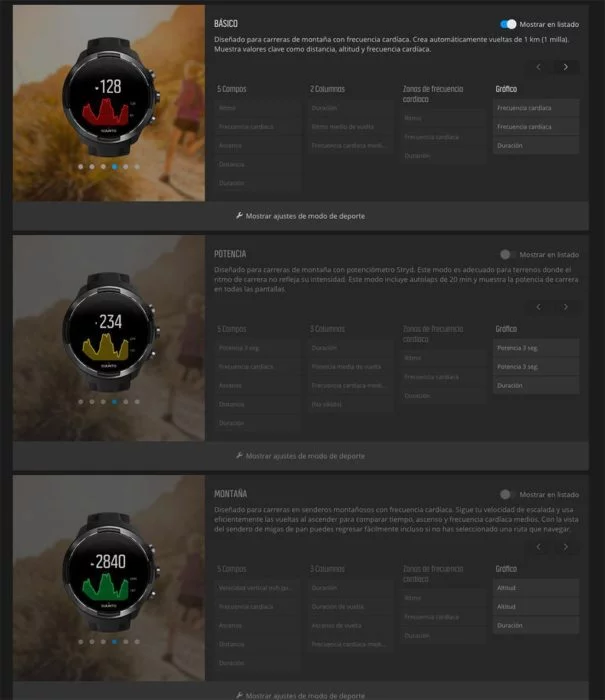
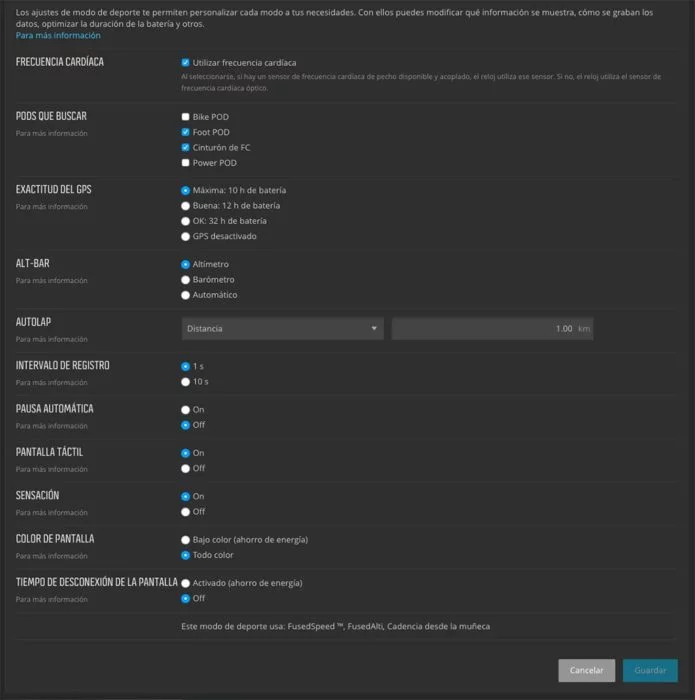
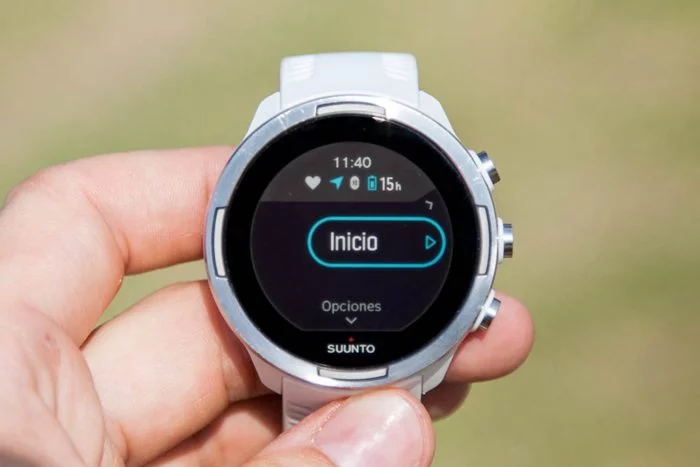
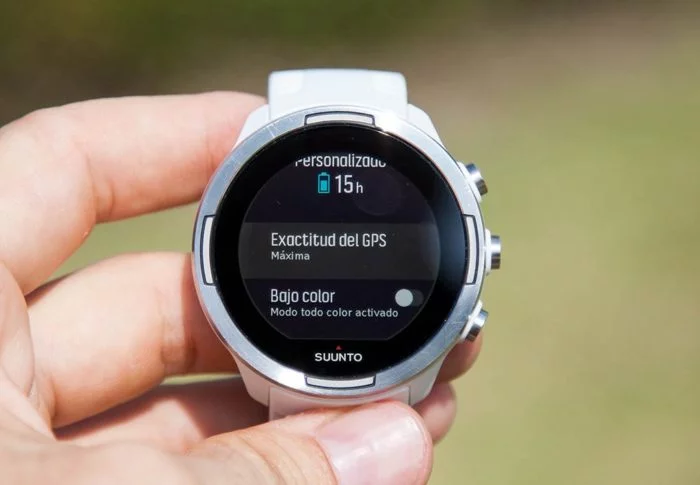
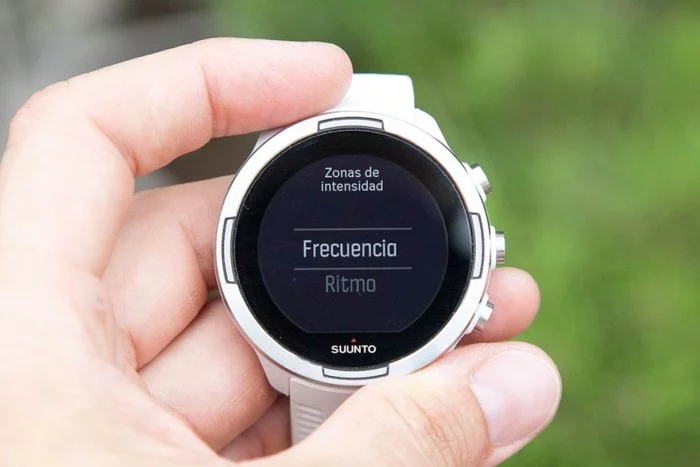
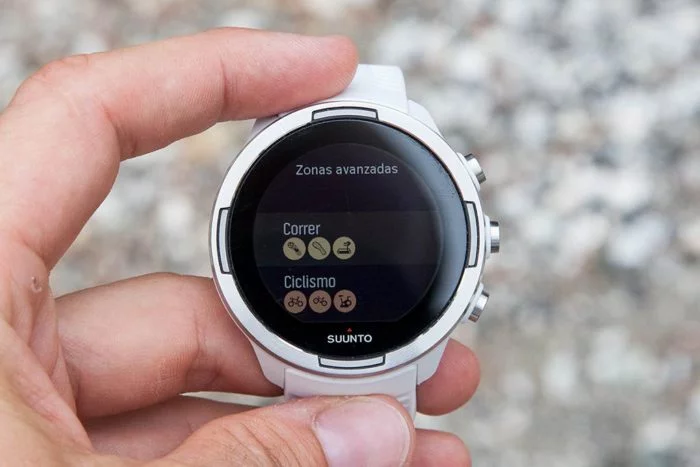
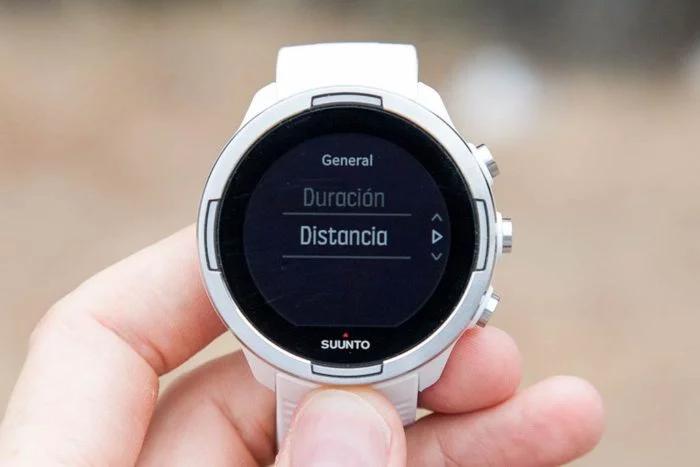
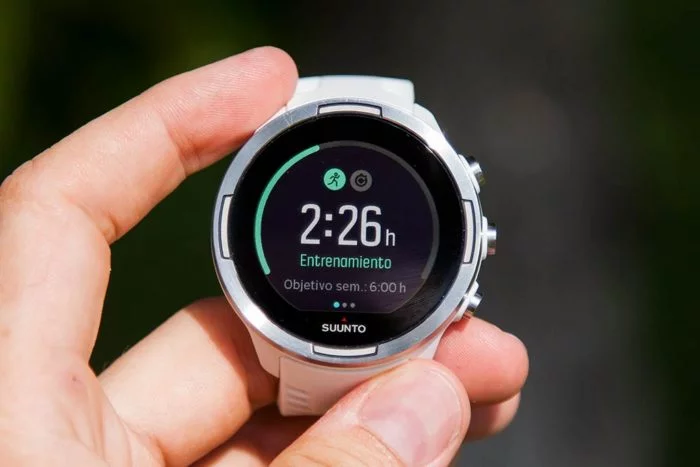

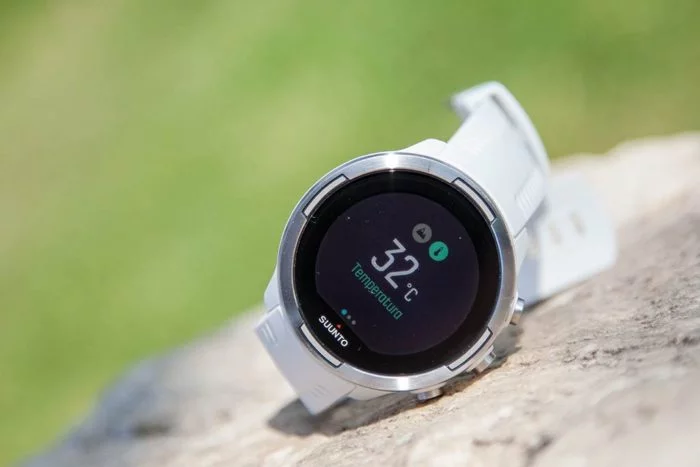
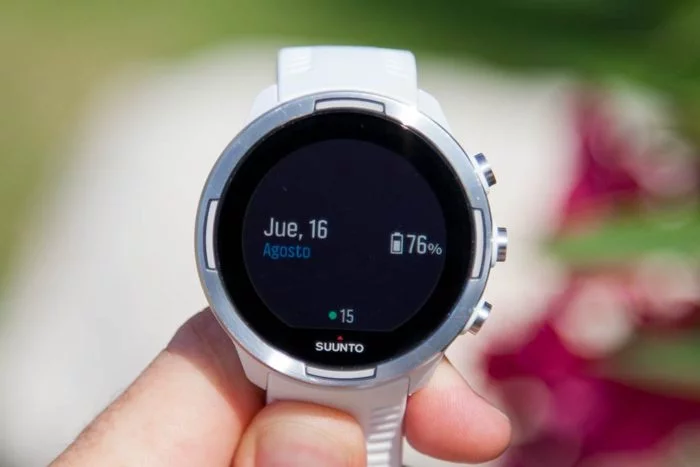
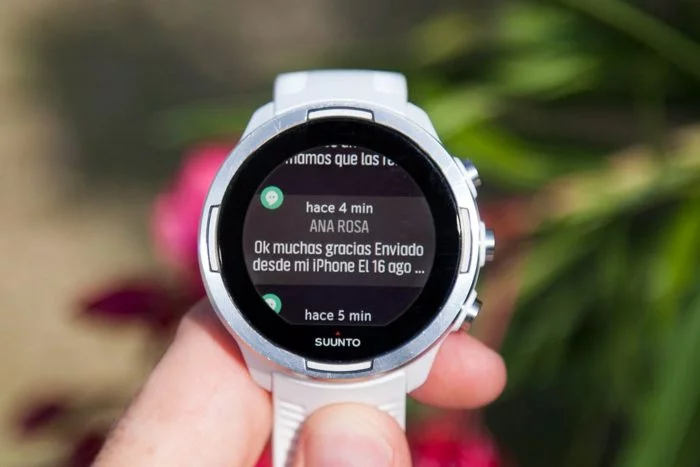
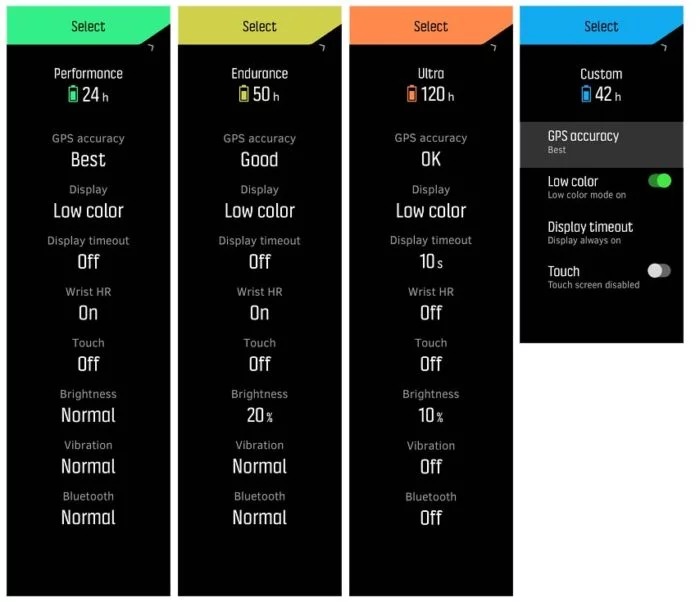
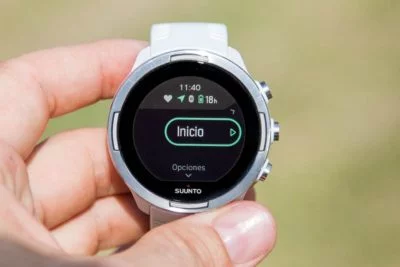


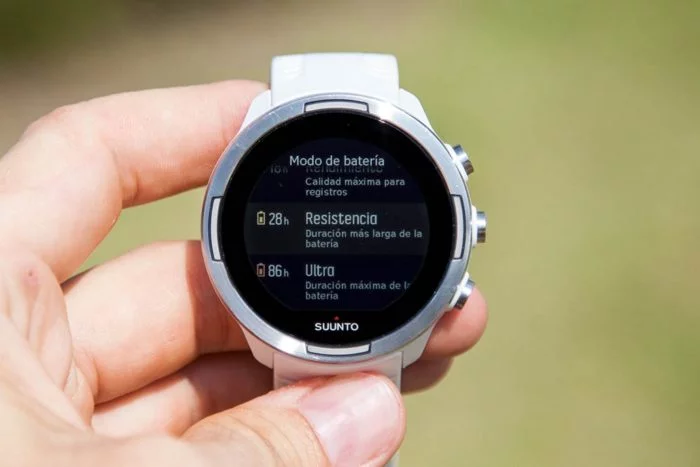
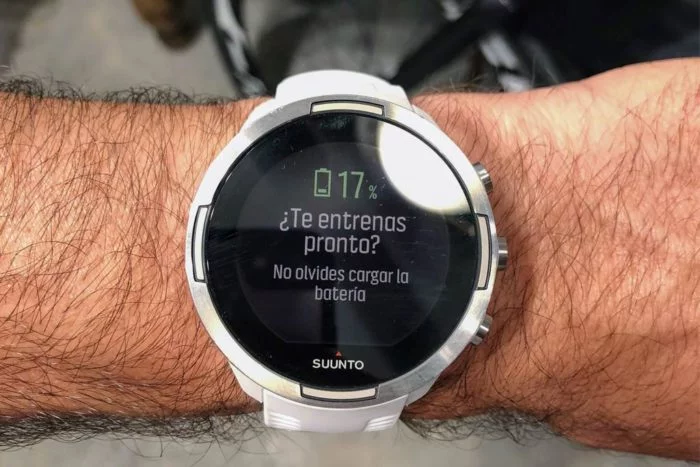
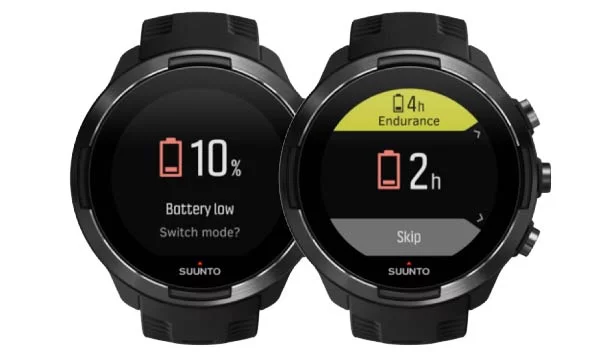
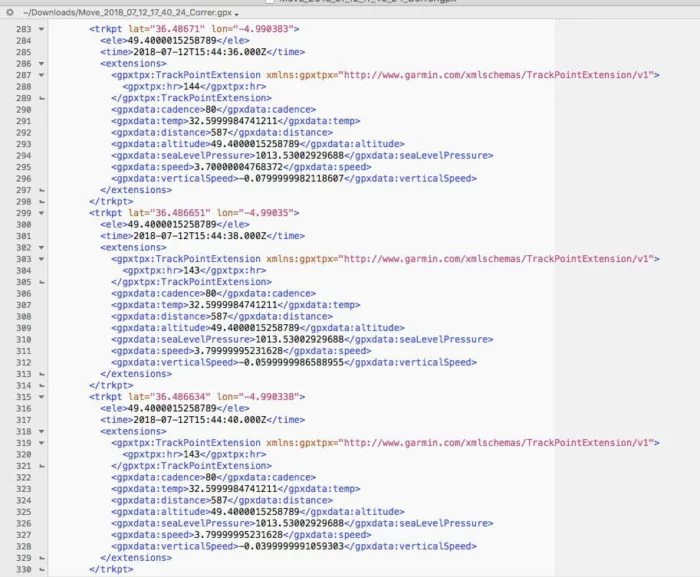
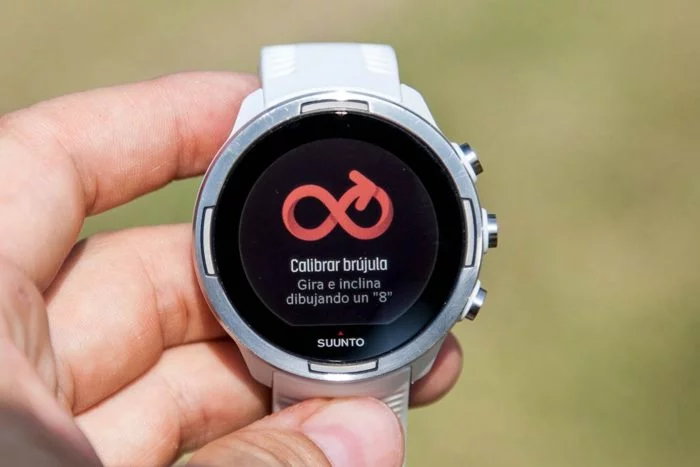
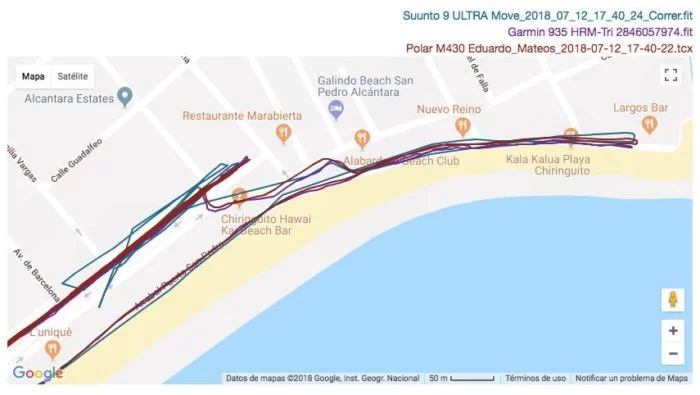
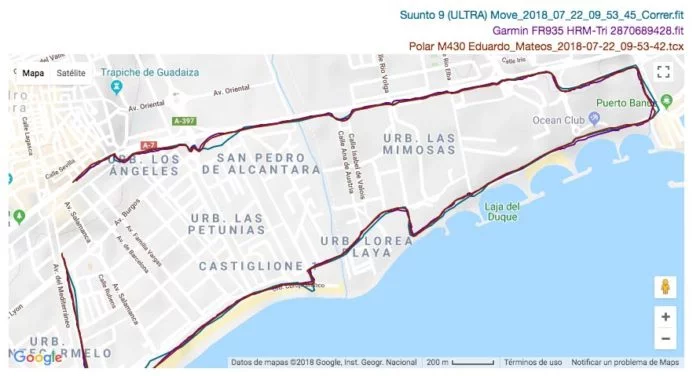
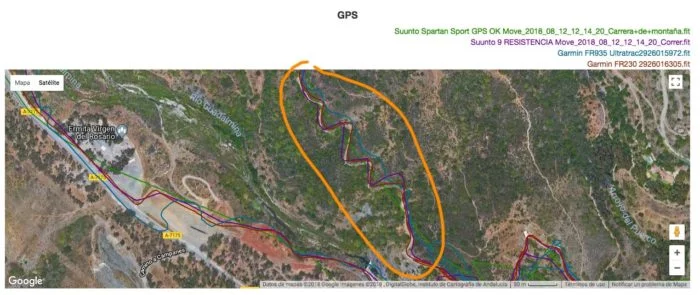
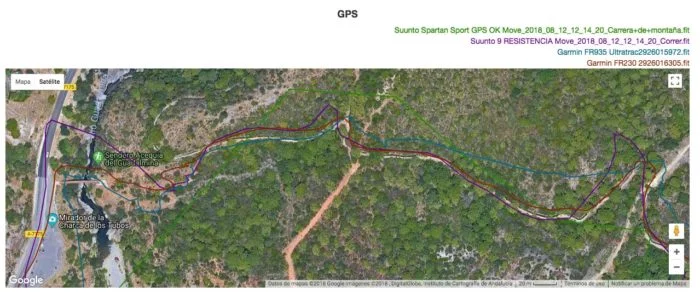
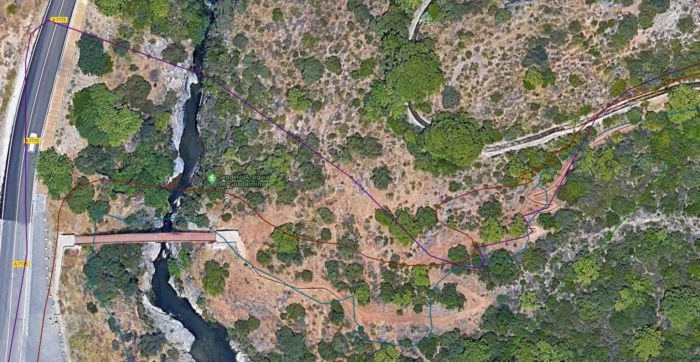
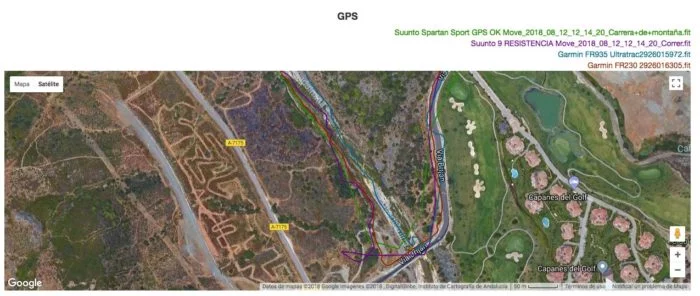


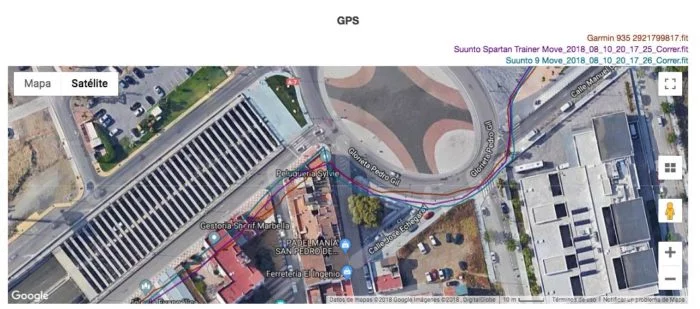
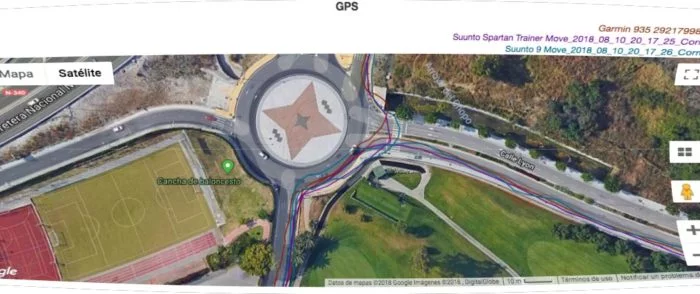

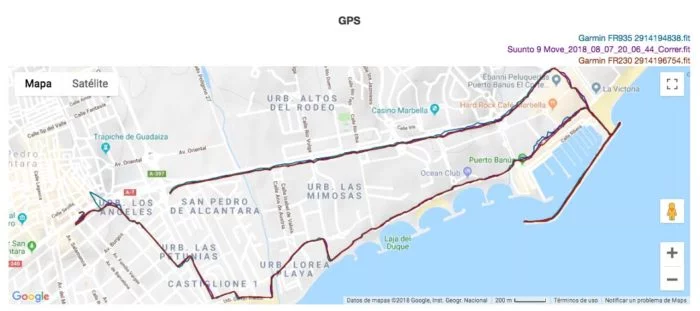
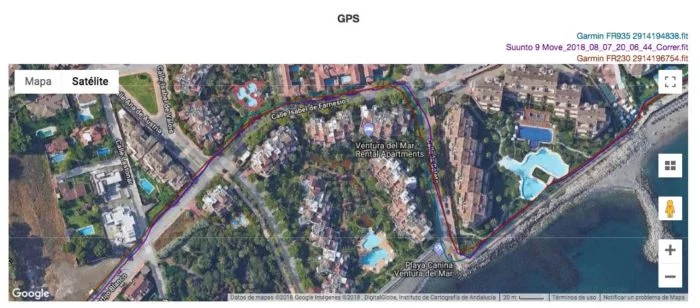
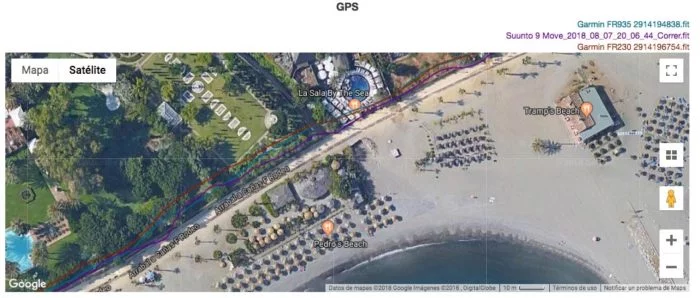
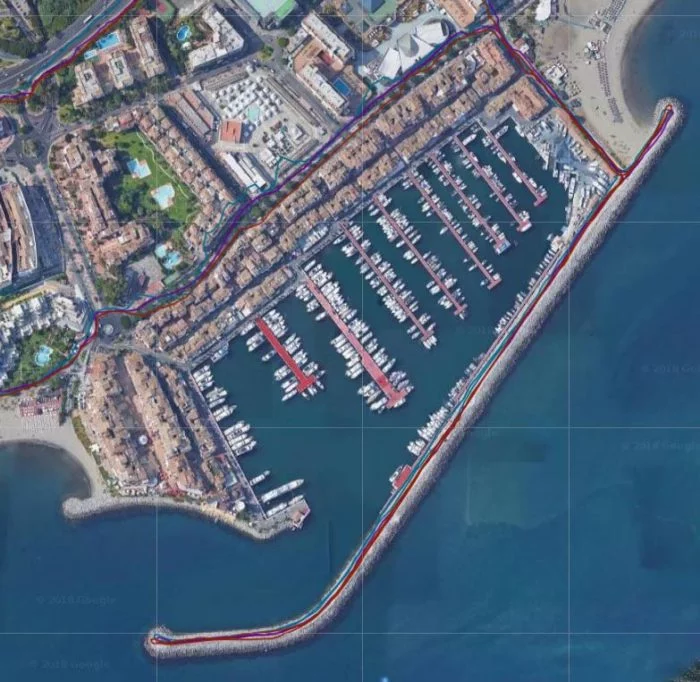
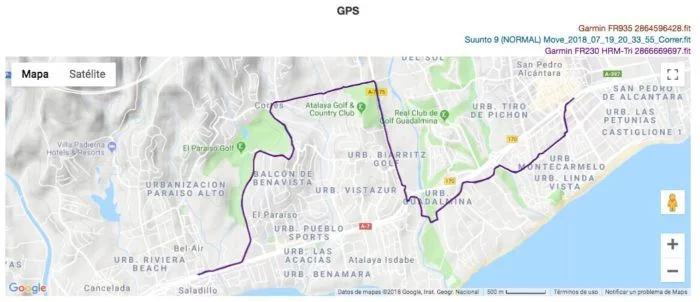

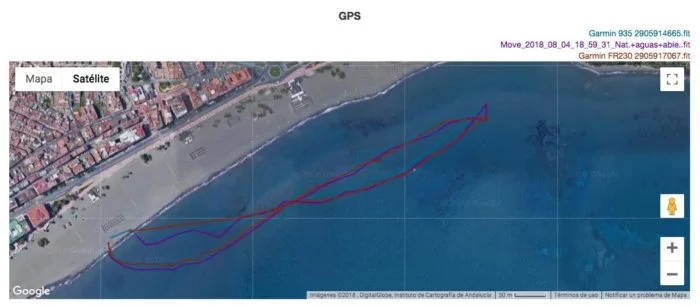
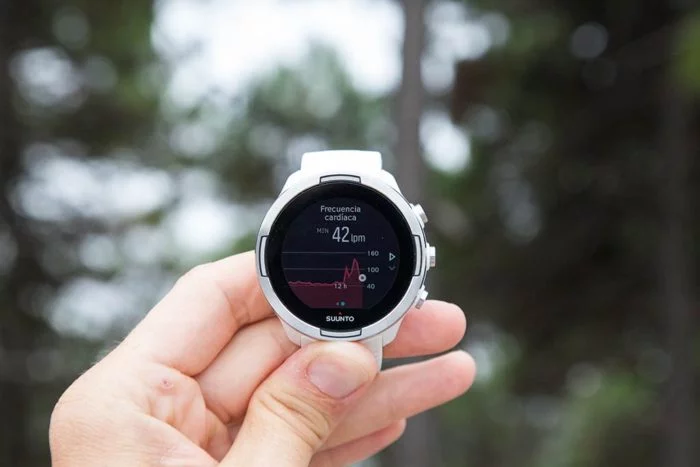









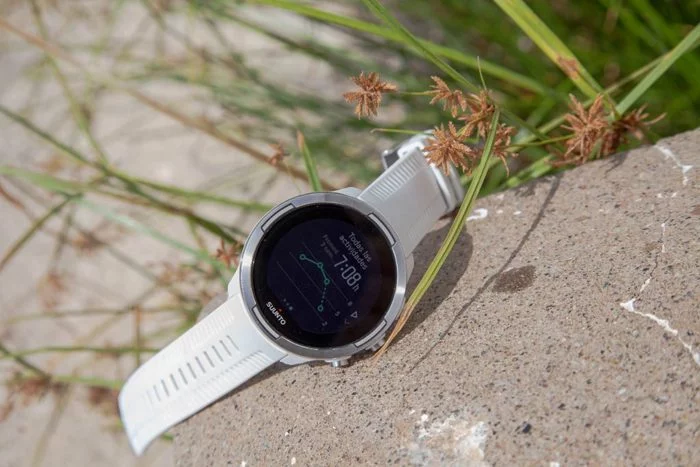
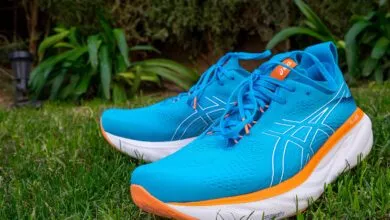
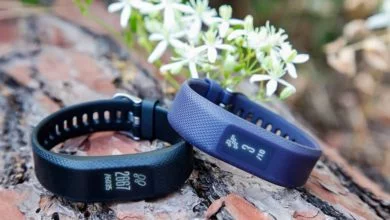

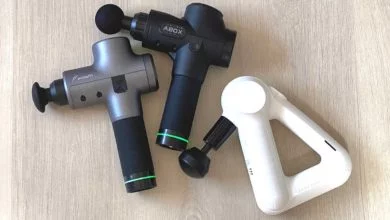
hola, tengo mi tom tom runner 3 y estoy pensando un autoregalo y no se si merece la pena este suunto 9 un garmin,
ultimamente se me dio por por participar y el tom tom me hizo unas mediciones raras sobre todo en alguna subida abrupta, quiza por no tener altimetro
Si quieres datos válidos de altitud lógicamente necesitarás un reloj con altímetro barométrico.
Si eres principante en trail tal vez el Suunto 9 sea excesivo. Ten en cuenta que las novedades se enfocan hacia la batería extendida. En el Suunto Spartan Baro encontrarás prácticamente las mismas funciones y te ahorras un pico.
Aunque si es para darse un capricho como auto regalo… contra eso no se puede luchar, y evidentemente el Suunto 9 tiene ese plus de funciones que no está en el Spartan Baro.
Hola, en mi caso tuve el baro un par de semanas, lo devolví, y estoy de acuerdo con algunas cosas de las que mencionas. Tienen que espabilar y hacer una buena integración de app suunto y como registra la información y la representa. Cosas como no poder enviar rutas desde app suunto y movescount a la vez. La medición del pulso continua la verdad es que la vi inútil. La duración de batería en modo reloj estaba muy mal optimizada.
La verdad es que son equipos de muy buena estética, teniendo dispositivos de garmin y polar fue el que mas me gustó por diseño, pero suunto tiene un grave problema de implementación de software.
Un saludo.
Muchas gracias por tu exposición.
Hola,
Quiero adquirir un reloj nuevo y estoy entre el suunto 9 y el spartan sport wrist hr.
Sería para preparar un maratón/carreras 10 km/media maratón(carreras urbanas).
Creo que las diferencias entre los dos son la bateria y el barómetro.
He visto que los atletas suunto que son maratonianos usan el spartan sport wrist hr,mientras que los de trail llevan el suunto 9.
Entonces merece la pena pagar un poco más y cogerme el suunto 9?(100 euros de diferencia en la web oficial).
He leído buenas opiniones de los dos.
Gracias.
No te fíes por lo que llevan los profesionales, porque cobran por llevar un tipo determinado de producto. Cualquiera de los dos te sirven para tu propósito de igual forma.
En cuanto a precio, echa un vistazo a los enlaces de Amazon que publico, porque además de colaborar con la página el precio es bastante mejor.
Osea q los profesionales sí cobran porque tú lo dices, Eduardo, y dices “no te fíes” y si alguien insinúa q tú puedas tener ayudas de las marcas, te ofendes…
Intenta utilizar el mismo criterio!!! Parece también lógico q tengas ayudas de las marcas… o te compras todos los relojes q pruebas?
Y por otro lado decir q el Spartan Sport Wirst le va a servir igual q el Baro 9…, si el Wirst es de lo peor q ha salido al mercado, yo lo tuve y es difícil q sea peor! Y el Baro 9 es parecido entonces? Algo no cuadra!! Por qué has puesto un 8,4 al Baro 9?
Hola Eduardo. Me encanta tu trabajo, siempre encuentro enfoques nuevos en comparacion con otras paginas. Gracias por no limitarte a relatar prestaciones y explicar la filosofia de los productos. Queria preguntsrte como funcionan las alertas de frecuencia cardiaca y sobretodo de potencia, que no me queda claro. ¿Son sonoras, vibratorias o se limitan al mensaje que citas? Y en el primer caso se notan o son tan ligeritas como em otros modelos que se te pueden despistar. Gracias por anticipado.
Gracias Pedro.
Son alertas visuales/sonoras y, por supuesto, con su correspondiente mensaje en pantalla. El Suunto no destaca por una vibración potente, pero si estás más o menos atento a que «algo» vibre, lo notarás perfectamente.
Hola! Sigo tu blog con asiduidad, ya me compré con tu ayuda un fénix 3 que estaba encantado con el pero ha muerto.
Ando buscando algo para correr y nadar esporádica mente, pero que me ayude a controlar las pulsaciones cuando hago crossfit, así mismo saber si tengo que descansar totalmente o puedo hacer un descanso activo en piscina por ejemplo.
Que me recomiendas¿? Me espero al nuevo polar¿? Me compro un smartwatch¿? O me voy a un Garmin fénix o incluso a este Suunto. Gracias de antemano
Pues de momento esperaría a ver qué tal van los nuevos Polar y su sensor óptico… Eso sí, en tu caso la opción Garmin puede hacer ganar enteros porque ya estás en la plataforma y es donde están todos tus entrenamientos.
Gracias!!!!
Muy buenas, excelente análisis, me encanta tu trabajo. Después de leerlo, recalcas la idea de que es para corredor de montaña principalmente. Actualmente ando en busca de un dispositivo para running principalmente, (las distancias máxima que suelo correr rondan los 25-30km y me preparo para la maratón). Piensas que este suunto 9 es demasiado reloj para mi? Alguna recomendación más económica de la misma marca? Gracias.
No es que sea demasiado reloj, simplemente que las ventajas que ofrece en cuanto a autonomía no las vas a estar aprovechando. Tienes desde el Suunto Spartan Trainer o, de similar tamaño, el Suunto Spartan Sport.
Hola,
a ver, que tengo un poco de lío. Yo tengo un fénix 5 y el sensor se rompe 1 vez al año, se cuartea, ahora me lo van a cambiar, pero después, me comprare ya un sunnto, por que no voy a pagar mas de 100€ al año por cambiar sensor.
Unos critican unos sunnto, otros otros modelos. según veo en los foros, la batería fatal, las notificaciones mal, que no las quiero, pero mal, no tiene despertador, vale no tiene, me fastidio….
¿Ahí alguno con pulso integrado en la muñeca que vaya como un fénix 5?
Hola Eduardo.
Tengo un problema bastante grave con la última actualización de Suunto 9 (2.8.28)
Llevo desde ayer intentando que se actualice y no hay manera (De la 2.8.24 a la 2.8.28)
Antes de actualizar el reloj, se actualizó SuuntoLink a la última versión.
Después de ésto, me apareció el aviso de la nueva actualización de Suunto 9.
Me dio un error al actualizar y en la pantalla de SuuntoLink me apareció la figura del reloj con una X en rojo, pidiendo que reiniciara el reloj.
Al hacerlo, volvió otra vez a intentar actualizar, y debajo de la figura del reloj, me apareció que estaba actualizando de la v 2.8.28 a la 2.8.28!!!!
Mientras, en la pantalla del reloj aparecía la flecha hacia abajo y los 4 puntos.
Nada más comenzar la actualización, comenzó a parpadear el segundo punto comenzando por la izquierda, y apareció una barra de carga.
Esto siguió así hasta que llegó al tercer punto, parpadeó pero no apareció la barra de carga.
En la pantalla de SuuntoLink, apareció el reloj, y la línea verde que lo rodea no llegó a los 3/4 de esfera.
Después de ésto volvió a aparecer la X roja en el reloj de SuuntoLink, y volvió a pedir el reinicio del S9.
He mirado en la web de Suunto y si el reloj no «espabila», pide que se reinicie directamente desde el reloj y después se conecte a SuuntoLink.
Ya lo he hecho no se cuantas veces, pero no hay manera.
Te ha pasado alguna vez en las pruebas del S9?
Un saludo.
Me ha pasado algo parecido con un Spartan Ultra. Se solucionó manteniendo presionado el botón superior e inferior. De todas formas prueba también a mantener presionados los tres botones, debería entrar en el modo de carga de software para reinicio completo. Si nada funciona tendrás que contactar con Suunto.
Buenas Eduardo, le comento actualmente estan de oferta tanto el Suunto 9 como el Fenix 5, nose por cual decantarme rondan el mismo precio unos 300 euros , enfocado a runing , natacion, algo de montaña y salud, tendría la opción de ir a por el Vivoactive 4 , cual me aconsejaría usted y si pudiera en orden de calidad y prestaciones ordenarmelos, estoy un poco liado.
Muchas gracias de antemano y espero que sigas haciendo estos pedazos de analisis.
Un cordial saludo,
Paco.
Dado que vas a hacer montaña, la opción recomendable es el Fenix o el Suunto, principalmente por la navegación de rutas.
Para salud en general el Vivoactive 4 sería el mejor enfocado pero claro, carece de navegación.
En cuanto al Suunto y al Fenix, debes valorar que el Garmin tiene altímetro barométrico y el Suunto de la oferta no.
De todas formas, echa un vistazo al resto de ofertas de Black Friday.
Y recuerda, comprando a través de los enlaces estarás ayudando a la página.
Buenas Eduardo,
en primer lugar agradecerte tu gran labor. Creo que nos sirve de mucho a los que estamos pensando en mejorar nuestro equipamiento. De momento corro con un TomTom Runner 3 desde hace unos 18 meses, y ando pensando en cambiar de reloj.
Me ha parecido muy interesante, como a ti, el tema del Fusedtrack. Me parece una pasada la precision que han conseguido con el Suunto9. Y se me ha ocurrido una pregunta. Como has dicho, cuando activas una de las opciones para ahorrar energia, es ese sistema de Fusedtrack el que hace la magia. Ahora bien, si llevo el gps a full, osea midiendo cada segundo, y en algun momento pierde la senyal por alguna razon (bien por los edificios cercanos, bien porque llegas a una valle en bajada bastante cerradito, con bastantes arboles), puede este sistema Fusedtrack ayudar en ese momento a continuar la ruta (ya sea si hay un giro o si sigue en linea recta)?
O la pregunta de forma simple, el reloj utiliza en todo momento esta tecnologia Fusedtrack ayudando al gps?
Muchas gracias
Un saludo y a seguir quemando suela!
No, el modo FusedTrack se activa sólo cuando estamos usando un modo de batería de bajo consumo. En los modos normales, aunque el reloj pierda señal, no lo utilizará.
Buenas, estoy entre comprarme el polar vantage V y el Suunto 9. Pero en los 2 tengo dudas en cuanto a configurar sesiones de intervalos complejas como por ejemplo: calentamiento + ((5x200mtrs descanso hasta pulsar lap + 3x100mtrs descanso hasta pulsar lap) x3 + enfriamiento.
Esto si se puede configurar en mi FR 235. Me podrian decir si es posible en el suunto 9 o en el vantage V? y como se logra hacerlo.
Gracias de antemano por la respuesta. Saludos
En el Vantage sí lo puedes configurar, no así en el Suunto que sólo permite intervalos sencillos (5×400 por ejemplo)
Gracias por responder… te molesto una vez mas. En el Vantage esta configuracion se hace desde la app o como? Estoy buscando algun video que me muestre como hacerlo antes de comprarlo
Se hace en la aplicación o en la página web
hola Eduardo buenos días, te comento mi duda,tengo un polar A360 ,ya que quiero un reloj multi deporte, estoy pensando en cambiarlo y tengo dudas entre cual me puede proporcionar mejores datos ,estoy entre el polar vintage-m y el suunto 9, más bien suelo hacer ejercicios de pesas, pero también hago mucho hiit , así como elíptica carrera y más, vamos que no paro y no me dedico a una sola cosa, suelo entrenar bastante y quiero un reloj que me ofrezca unas buenas prestaciones y mida lo mejor posible para ver mis progresos,me gustaría además que tuviese una buena app de móvil para registrar todos los datos, te agradecería me intentaras aconsejar un poco,muchas gracias de antemano.
Si te importa una buena aplicación de móvil ahora mismo Suunto está en tierra de nadie… Por lo demás son dos relojes muy diferentes, si el uso está orientado a montaña el Suunto, para todo lo demás seguramente estés más contento con el Vantage M.
Sigo dandole vueltas y vueltas…quiero regalar para Navidad un reloj con pulso en muñeca, tiene un garmin fenix 3, veo el fenix 5 y 6…pero son algo caros, no se si merece la pena, veo tambien este…el suunto 9 ahora esta por menos de 300 no se si lo ves buena opción o compro con garmin.
Se espera algun suunto nuevo en poco tiempo¿?
No corre ultras ni nada de eso, lo quiere para el dia a dia, controlar pulso diario y entrenar con el controlando el pulso tanto en gimnasio como corriendo.
Gracias de antemano
Si es para regalar a alguien y sin tener datos de si quiere cambiar, te recomiendo que sigas con la mima marca. No obstante, para ese uso sin hacer montaña valoraría también el Vivoactive 4.
Buenas tardes !!??
Al final y gracias al Black Friday compré el suunto 9 a través del enlace que pusiste, aunque lo “recibí” como regalo de reyes este lunes. En los comentarios del Black Friday “hablamos” por aqui.
Muy contento, muy de acuerdo en tu descripción y, comparando con el fénix 5 que tengo, no aprecio mucha diferencia salvo en duración de bateria (aún no lo he cargado ????!!! ) y la pantalla que es mucho más grande. Mucho!!!
Pero ayer al ir a hacer mi entreno de carrera (me encuentro preparando un IM) me fue imposible meterle un entreno: ni series, ni descansos… nada !!! Por más vueltas que di, no encontré manera de hacerlo y terminé metiendo el entreno en el garmin y saliendo con ambos relojes (te diré que soy algo friki y salí con 3… mi adorado polar v800, el fénix 5 y el suunto).
Aprecio que tanto el polar como el suunto apenas difieren en las distancias, y el garmin casi siempre engorda un pelis las cifras… será normal?
El sensor de FC de muñeca tiene “truco” y ajustándolo bien fue igual de fiable que el H7 de polar y el H10 que use el otro día.
A ver si me puedes ayudar con lo de los entrenos y, si puedes, decirme dónde puedo ver un manual o instrucciones más amplias para sacarle el jugo… que las que vienen por defecto me parecen muy cortas.
Muchas gracias de antemano !!
En Suunto los entrenamientos de intervalos son sencillos (sólo del tipo 4×800 con calentamiento y enfriamiento, por ejemplo) y se programan directamente desde el reloj.
Tienes manual de usuario completo en la web de Suunto aquí: https://www.suunto.com/es-es/Asistencia/Asistencia-de-productos/suunto_9/suunto_9/
Muchas gracias !!!
ahi ando, un poco decepcionado, me ha fallado cogiendo la señal del GPS en 2 ocasiones y, entre eso, y la imposibilidad de meter las sesiones que me manda el mister… claro, no estoy muy convencido con la compra. en duración de batería sigue siendo el rey, pero, de cara a correr triatlones… no se si me compensa.
Si esperas a que el reloj marque que tiene recepción de GPS no debes tener ningún problema.
En cuanto a triatlón e importación de entrenamientos desde Training Peaks sí, en ese sentido Garmin continúa siendo mejor opción.
Muy buenas, una pregunta. Tengo un Suunto ámbito 3 sport que he estado utilizando durante 4 años muy contento. Ahora he comprado un Suunto 9 (en parte gracias a los comentarios y el buen análisis de Eduardo. Realmente interesante).
El caso es que ahora estoy arrancando y no se si puedo trasladar mis moves (actualmente en MOVESCOUNT) o al haber cambiado de app a la nueva pierdo todo el histórico… imagino que se podrá pero no se como..
Puedes ayudarme??
Gracias de antemano y felicidades por tu trabajo
Sí, desde la Suunto App puedes hacer la importancia de todos los entrenamientos que están en Movescount
Hola,tengo el suunto 9 (no baro) y en entrenos cortos de poco desnivel me ha dado mucha diferencia con dos garmins,( en 10 km , suunto 134+ y garmin 211+)
Hoy en un entreno me ha salido 1000+ y garmin 1100+
Estos datos me han dejado un poco mosca.
Alguna opinion ?
Gracias.
Aquí puedes ver cómo es el uso del altímetro barométrico y de dónde provienen los datos: https://www.correrunamaraton.com/en/gps-altimetro-barometrico/
Hola!
Lo primero enhorabuena por tu pagina!
Y dos dudas que seguro que controlas. He adquirido recientemente un suunto 9 en sustitución de un polar m430.
Por un lado noto que la búsqueda de gps es mucho mas lenta con el suunto. Especialmente con el m430 notaba mucha agilidad en lugares recurrentes pero con el suunto no. Trato siempre de hacerlo en parado pero le cuesta varios minutos. ¿Algo que se pueda hacer?
Por otro lado note que con el cambio de reloj con los mismos entrenamientos y estado de forma el suunto siempre me marca en torno a 10 ppm más que el polar. ¿Es normal?
Muchas gracias!
Si tienes el reloj emparejado con el teléfono descargará la caché de satélites, que es lo necesario para la búsqueda rápida. Las pulsaciones tienen que ser las mismas, ten en cuenta que el Suunto pesa mucho más y que es más crítico a movimientos, por lo que tienes que tener más cuidado en cómo lo llevas en la muñeca.
Sincronizo el reloj siempre después de cada actividad. ¿Te refieres a eso? Hoy he probado a conectarlo también al ordenador y me ha saltado una actualización. A ver si así mejoramos. Hoy de nuevo he estado unos 5-6 minutos buscando GPS.
Respecto a las pulsaciones trato siempre de ajustarlo bien y no rozar con ropa ni ponerlo sobre el hueso de la muñeca pero sin duda no va bien porque, aunque tengo siempre las pulsaciones altas con el suunto me las marca siempre muy altas (en ejercicios intensos a 5-10 ppm de la FCM y en rodajes a unas 20-25). Con el polar podía ser a 35 y a 20. Tengo la muñeca muy pequeña. Podría tener algo que ver?
Crees que el reloj podría tener algún defecto de fábrica por ambas cosas?
Muchas gracias!
Sí, el reloj tiene que estar siempre emparejado con el teléfono para recibir las actualizaciones.
En cuanto a las pulsaciones, lo importante es llevarlo bien en la muñeca.
Buenos días Eduardo,
Llevo entrenando con un Suunto 9 sin barómetro desde principio de año y la verdad contento con todo excepto con el desnivel +,
el otro día corrí una carrera de 260+ y me marco 134+, por lo que ayer decidí salir a entrenar ida y vuelta el mismo recorrido por lo que debería de dar mismo + que – y me dio 35+ / 60-.
Fallo del reloj o error de configuración del reloj por mi parte.
Un saludo
No hay ningún error, simplemente es la forma en la que funciona un reloj que no tiene altímetro barométrico. Aquí puedes encontrar todos los detalles de cómo funciona el altímetro barométrico.
Hola,tengo un ambit 2,con el que estoy encantado y quiero continuar con suunto, y estoy interesado en comprar un suunto 9,se pueden usar dos relojes a la vez en movescount.Se podrían subir los entrenos con los dos?.Es muy recomendable el barómetro o con el que no lo trae es suficiente para la mayoría de los mortales?jajaja.Hago carreras de montaña y no se si compensa pagar la diferencia de precio del barómetro,hay mucha diferencia en la medida de los desniveles y alturas entre uno y otro?.Un saludo y gracias por adelantado,muy interesante el análisis.
Sí, puedes mantener los dos sincronizados. Puedes sincronizar el Ambit2 con Suuntolink y el Suunto 9 con el móvil, por ejemplo.
En cuanto al barómetro, aquí tienes todo explicado.
Buenos días,
Hace unos meses adquirí un Suunto 9 no baro, y después de unas semanas de uso veo que los ascensos acumulados que me da son casi la mitad que los que me daba el Tom Tom Multisport (también sin barómetro). Si aplico la corrección de elevación en strava una vez subida la actividad también veo que la elevación sube mucho (aprox un 80%).
Tengo claro que los relojes sin barómetro utilizan capas de mapas para hacer el cálculo, pero me resulta algo raro una diferencia tan abismal. Sugerencias?
Hola!
Estaba buscando un sportwatch para regalar a mi pareja y finalmente me he decantado por el Suunto 9. He estado barajando el Suunto 7 (WearOS), Garmin Fenix, Apple Watch, Coros Pace, Amazfit Stratos… y el uso va a ser: nadar, senderismo, mtb, y notificaciones en el día a dia. Así las cosas, el Apple Watch tenía todas la papeletas, pero la WR 100M y su pantalla táctil, además de su duración de batería, ganaron mi aprobación (así como el ofertón en la web de Suunto en el momento de hacer la compra). Para las rutas, será interesante comprobar si es compatible con Wikiloc, pero no creo que haya problemas. Y la pantalla grande espero que tampoco lo sea, sino una ventaja.
buenas, tengo un Suunto 9 desde hace un par de semanas y noto que la bateria cuando lo tengo guardado sin usar vuela y en dos o tres dias se me apaga el reloj.cuando entreno,según el modo de bateria seleccionado aguanta bien. no creo que sea normal y me gustaría saber tú opinión antes de llevarlo al servicio técnico. muchas gracias!!!
No, si la batería está al 100% y sin uso se agota totalmente no es normal. De todas formas, antes de otras cosas prueba a restablecer el software con la aplicación del ordenador.
Hola, quisiera saber si conoces los próximos lanzamientos de SUUNTO, tanto en software como nuevos modelos.
Ya son meses que no han sacado modelos nuevos (el 9 baro pronto va a hacer 3 años desde el lanzamiento) y en temas de software últimamente tampoco ha habido grandes cambios.
Enhorabuena por el trabajo que haces.
Muchas gracias.
Seguro que hay algo pronto… pero de momento no te puedo decir nada más.
Buenos días Eduardo
Tengo un suunto traerse porque lo utilizo para travesías montañeras.
Normalmente es lo que hago,también algo de renting
Merece la pena comprarme un S9 ?
Tengo una ocasión de coger uno un poco más varado de 2 mano
Gracias por tu trabajo y consejo
Jesus
Sí, el salto del Traverse al Suunto 9 es bastante notable. Pantalla, autonomía, funcionamiento…
Buenos días,
Con qué aplicación realizas las comparativas? tengo varios relojes y me gustaría realizar comparativas entre ellos.
Gracias,
El sistema que utilizo es de pago. No obstante tienes la web gratuita Quantified Self (https://quantified-self.io/) donde puedes hacer comparativas entre diferentes archivos.
Buenas, tengo un Garmin viviactive 3 y estoy pensando en cambiar de reloj. Quería preguntarte entre el suunto 9 y el Garmin venu 2 cual me aconsejas. Lo uso para ejercicio de fuerza 6 días al la semana y alguna salida a correr y para uso diario de recopilación de datos pasos, sueño, frecuencia etc. O si me aconsejas otro modelo. Muchas gracias.
Para ese tipo de uso, sin duda alguna vas a estar más satisfecho con el Venu 2.Lo tienes además a buen precio ahora mismo.
Yo coincido con este análisis tan completo, tengo hace 1 año un Suunto 9 y lo quiero actualizar a Polar Pacer Pro, en Suunto todavía no se pueden editar los modos de deporte que ya trae y eso no lo entiendo que no lo solucionen, además solo se puede contar con 4 pantallas, con Polar eso es como debe de suceder, lo adelanta Polar, Suunto 9 gasta demasiada batería en el dia sin entrenamiento y eso igualmente no lo a solucionado Suunto, la medición de frecuencia cardiaca desde la muñeca en ocasiones se vuelve loco y eso afecta en los resultados de vo2 Maximo, con Polar eso es un tema mejorado y por mucho, Suunto es una gran marca pero se olvida de las garantías fuera de su país de origen y también Polar en eso le lleva mucha ventaja